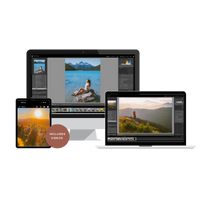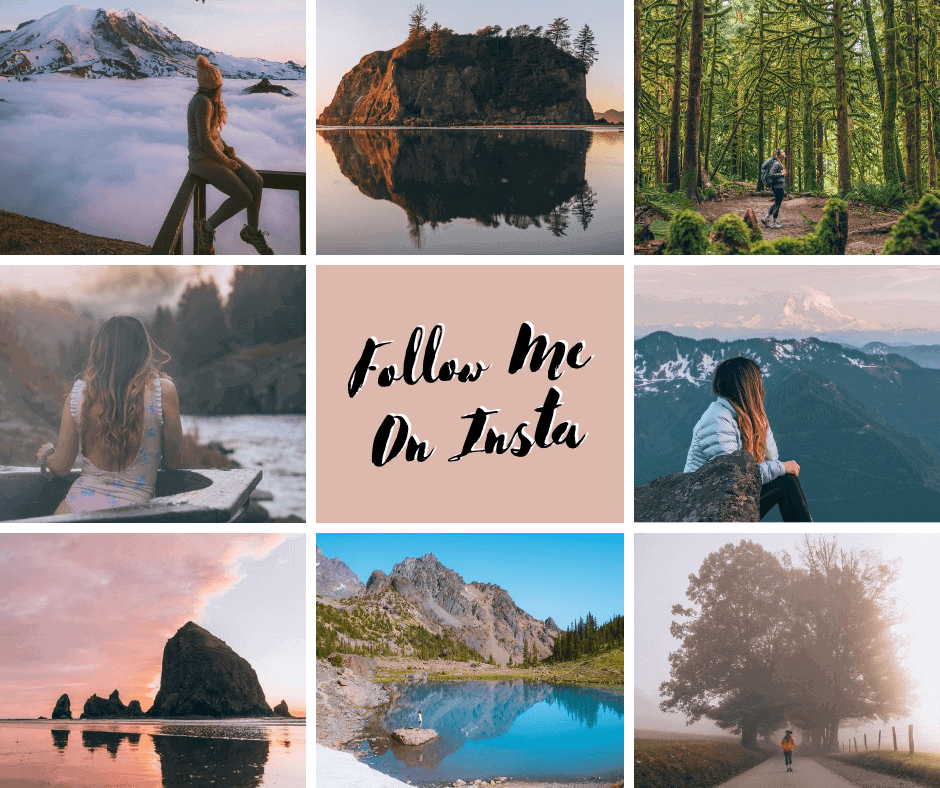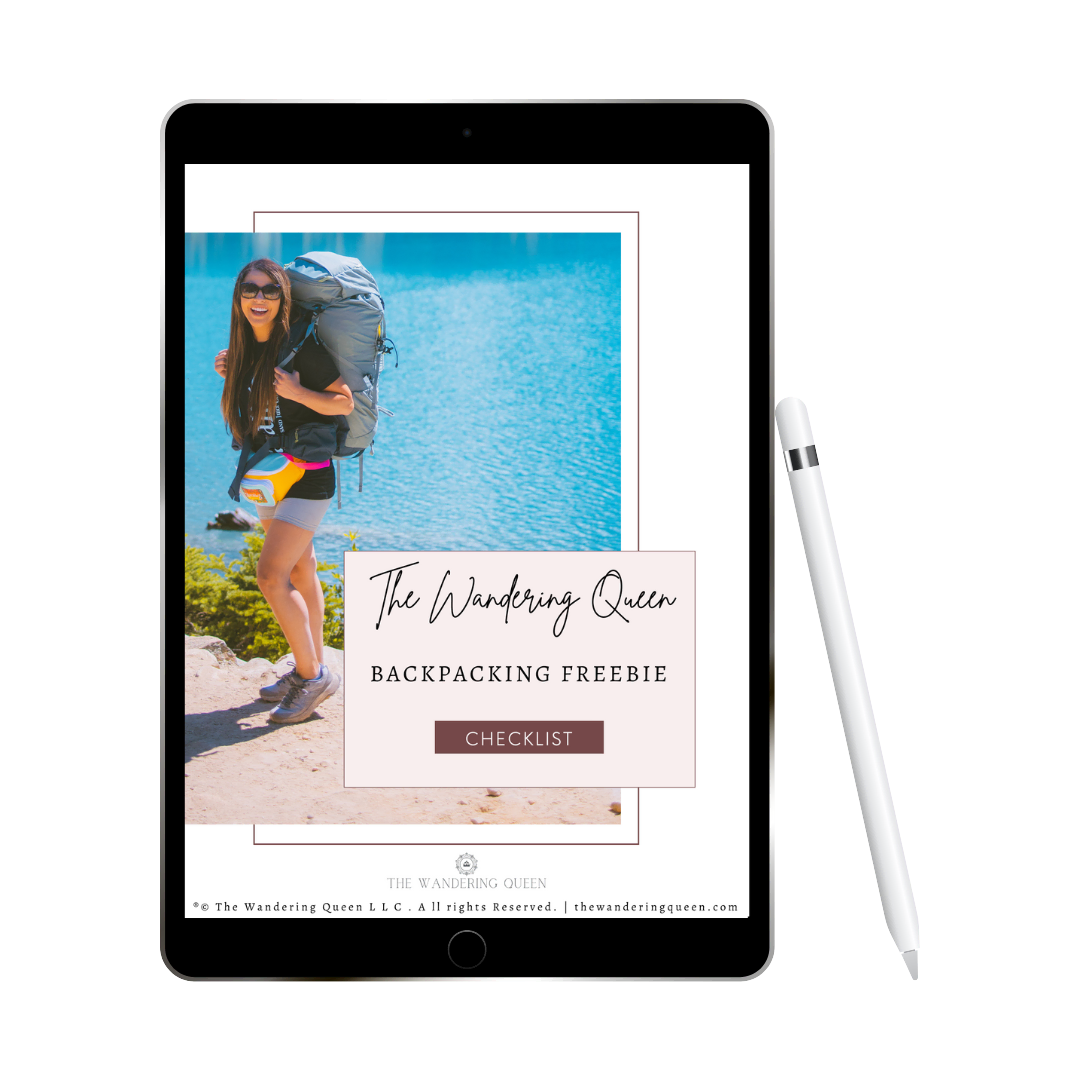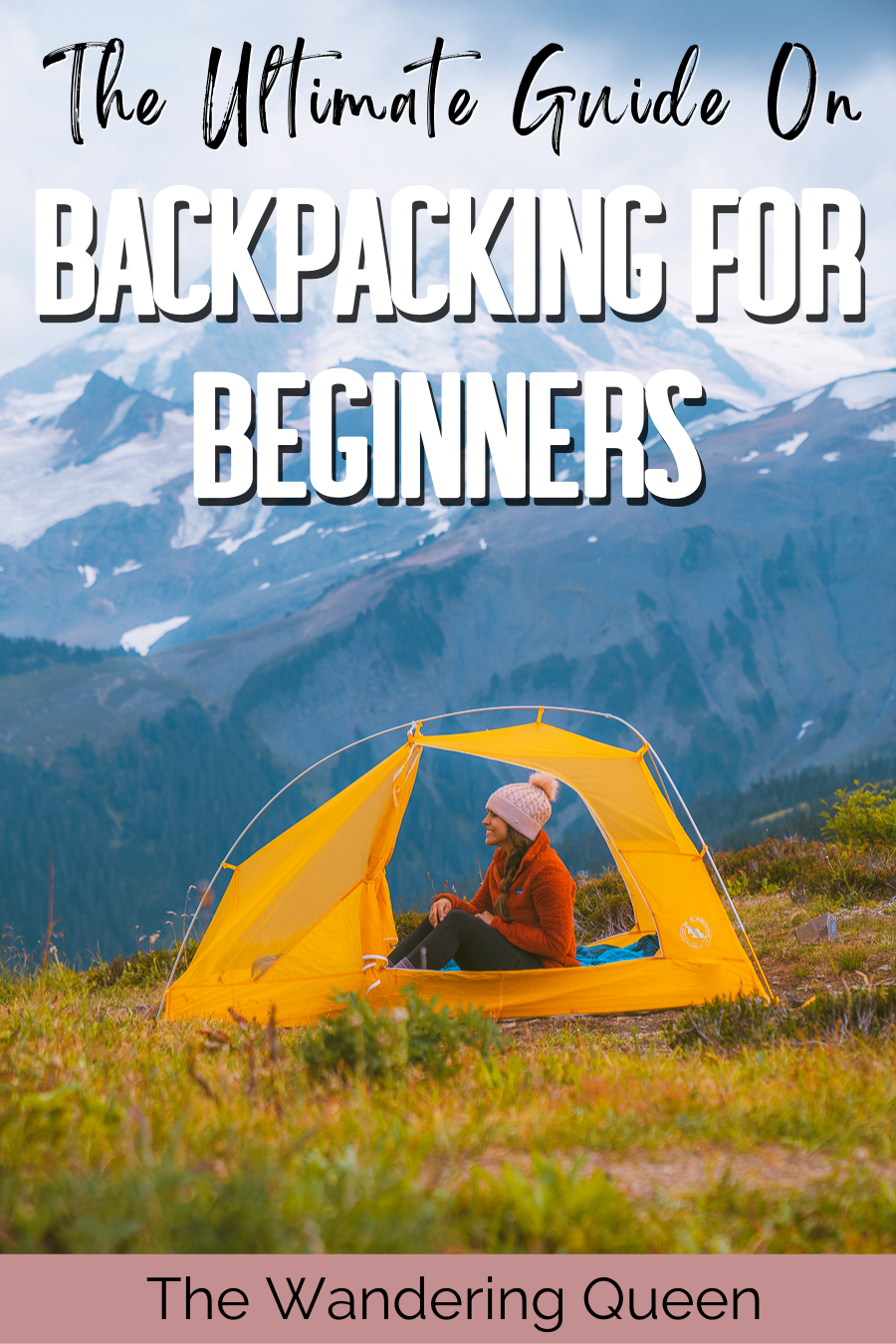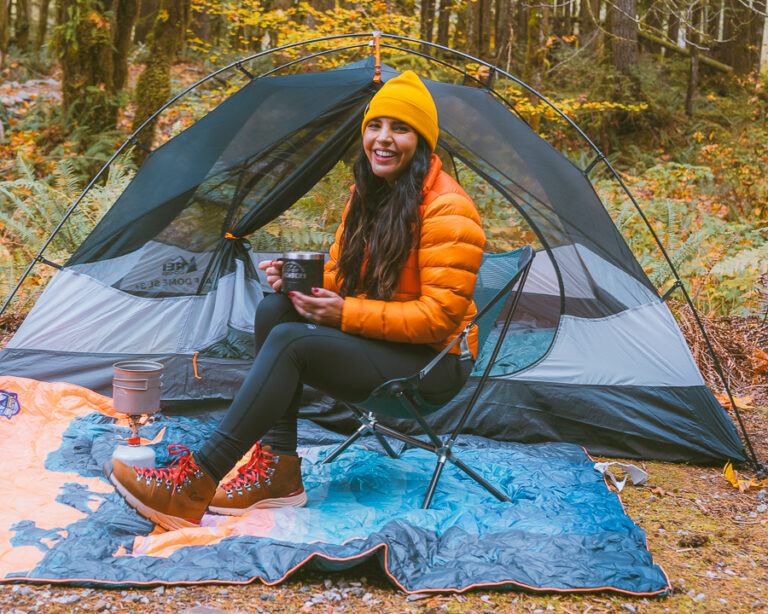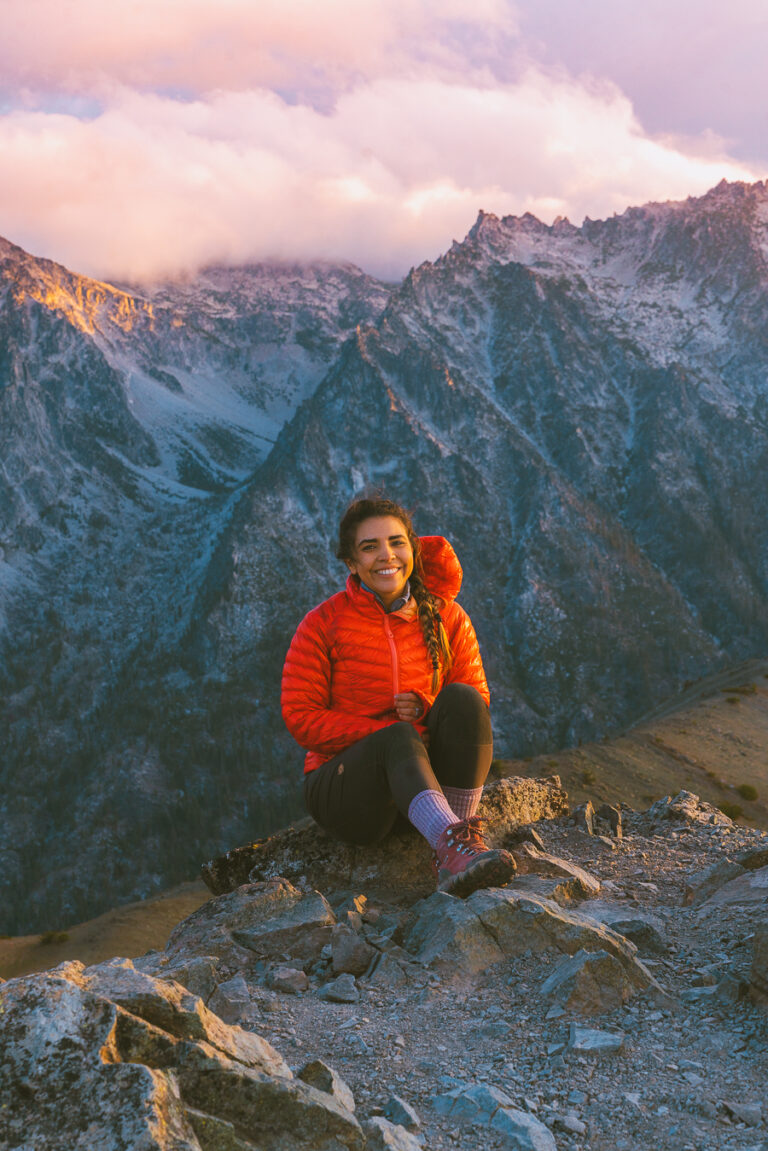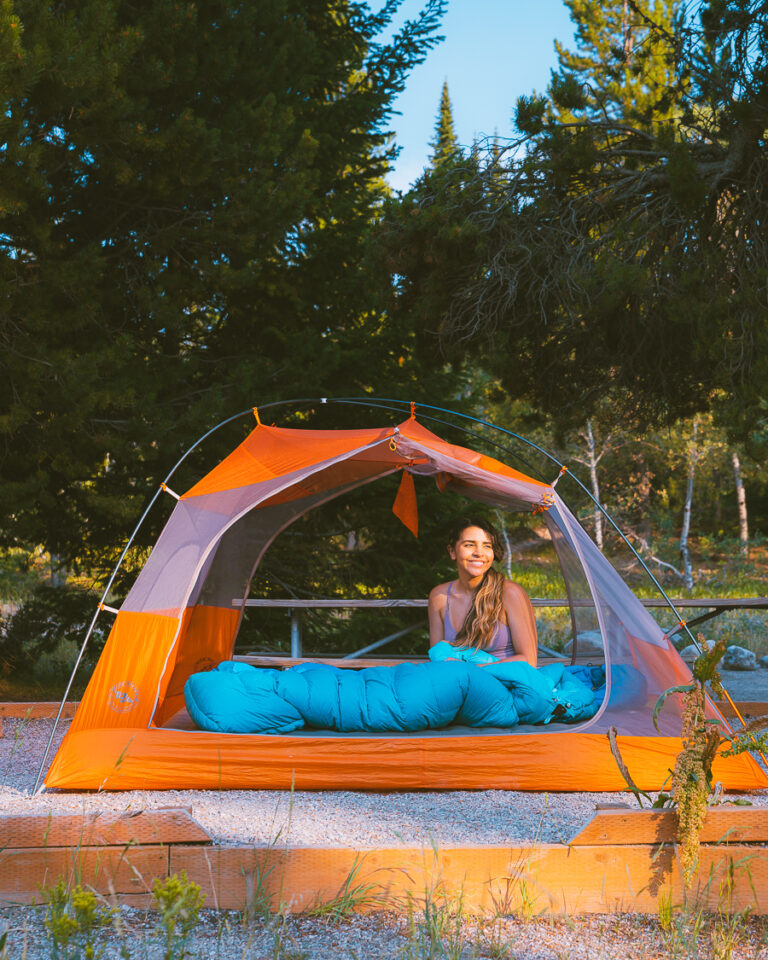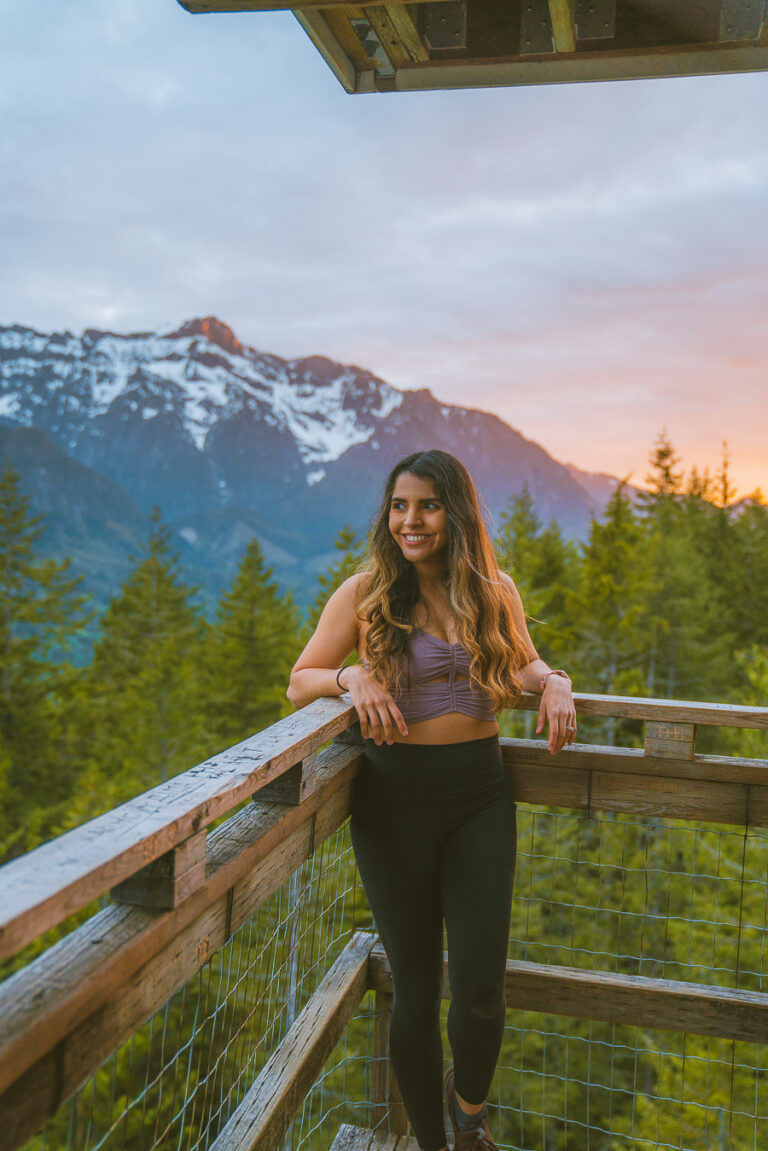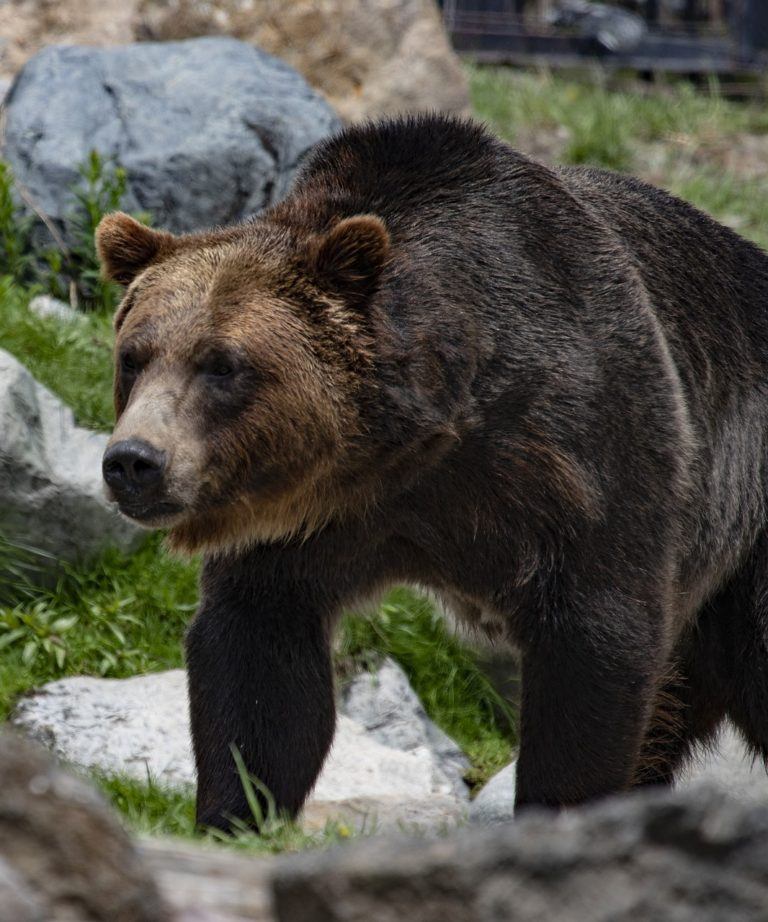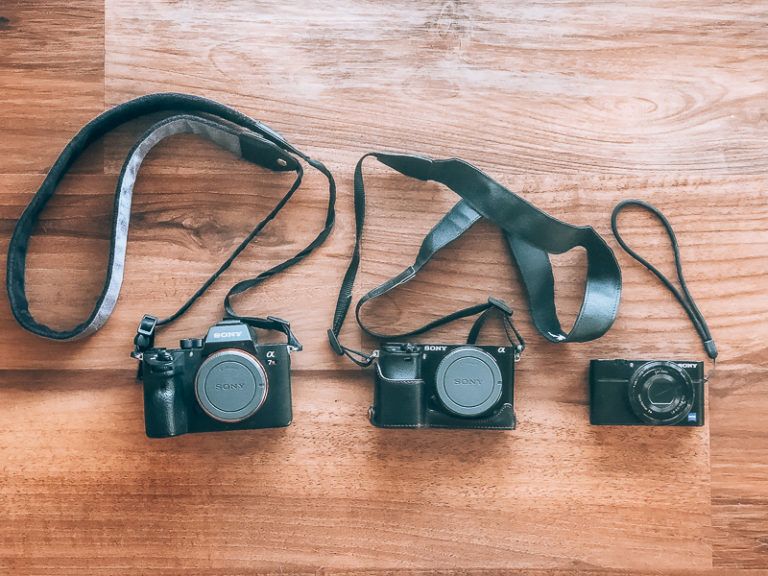22 Amazing Tips On Backpacking For Beginners: Backpacking 101
Backpacking can be some of the most stressful trips to plan, especially when you are a beginner. You are packing your house onto your back and hoping that you didn’t forget something crucial. But if you can become a backpacking expert, it is one of the most rewarding experiences you will ever have. There are fewer crowds, sunrises and sunsets are easy to watch, and you feel at peace away from the hustle and bustle of everyday life.
My first time backpacking experience was a disaster, though. My equipment was too heavy, I was out of shape, I had the worst backpack in the world, I got a million blisters, and I forgot a map and compass. I was a disaster, but I learned from it, and I am here to help you learn from my terrible mistakes. This ultimate backpacking for beginner tips should help you start planning your amazing outdoor adventure! Enjoy!
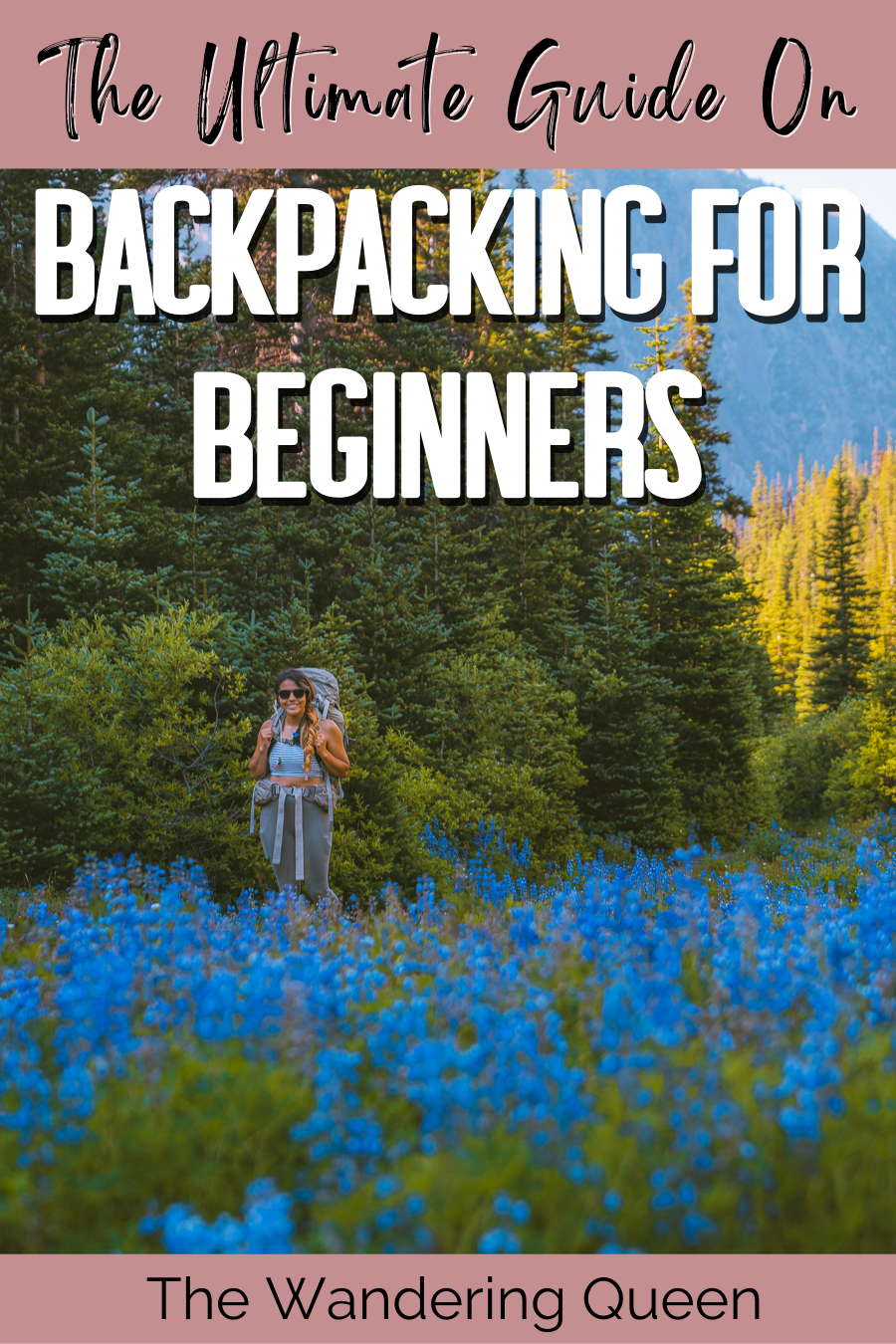
Disclosure: This post contains affiliate links. If you click one of them, I may receive a small commission (for which I am very grateful for) at no extra cost to you.
Download my free Outdoor Photography Guide
Backpacking for Beginners Tips
Day Hiking VS Backpacking
When you first step into the outdoor world, learning the difference between day hiking and backpacking can be confusing. The main difference is with day hiking, you do not stay in the wilderness overnight, so no need to pack a backpack with a tent or a sleeping bag. But with backpacking, you pack your backpack with the intent to stay in the wilderness overnight. You pack your backpack with a tent and sleeping bag (and many other things) and hike to the destination and stay in your tent.
Train Before Your Backpacking Trip
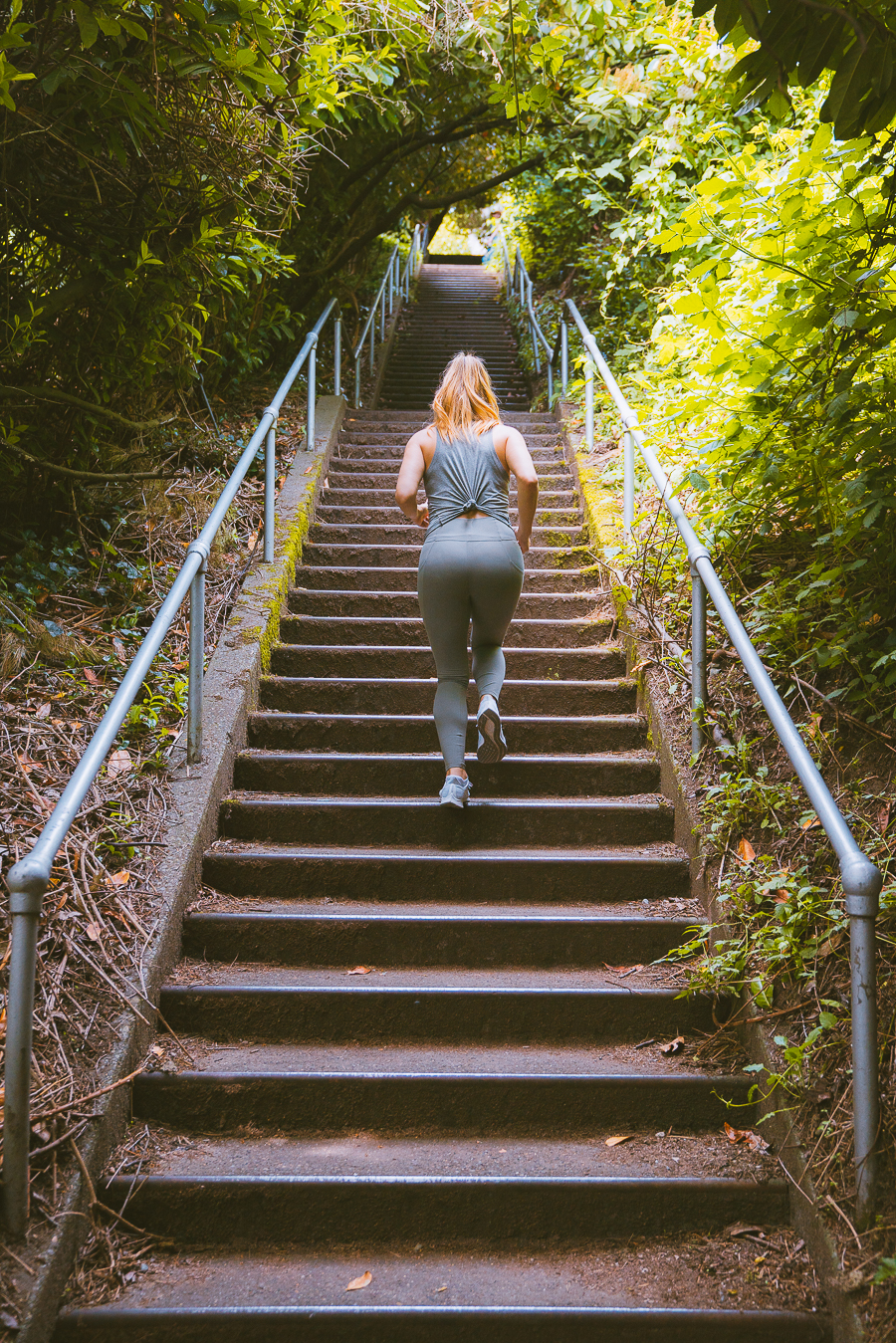
Always train for your backpacking trip. Backpacking can be difficult, and if you go out and trek without ever hiking before, it might be a miserable experience. I experienced this while backpacking in Canada years ago.
The next time I went backpacking in Patagonia, I signed up for a half marathon, and the training for that helped significantly! Since I lived in Texas at the time, training by hiking was more complicated, so I picked training for a half marathon.
I now train around five times a week for backpacking. I walk home every day, I do sprints and weight training, and then on weekends, I hike.
You don’t have to do the same schedule as me, but it is a good sample for getting fit for backpacking.
Read More: Strength Training For Hiking and Backpacking
Packing Too Much Gear
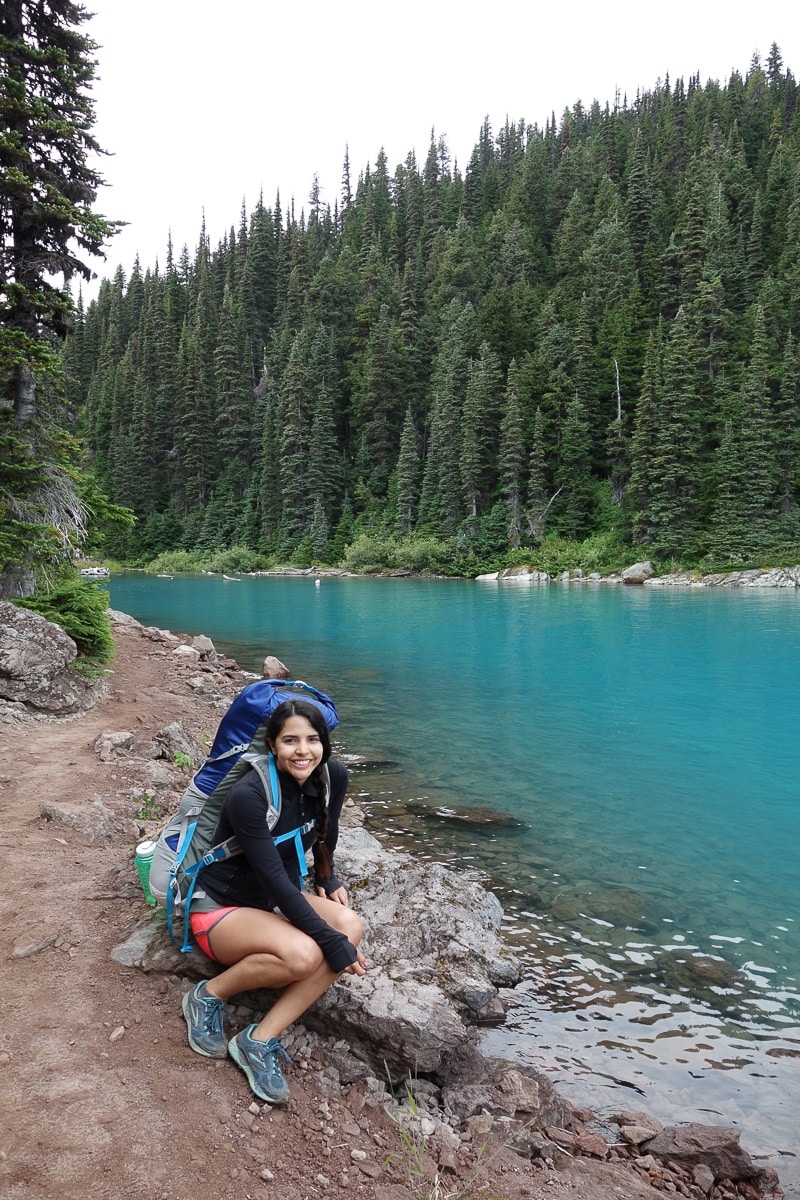
I feel like packing for backpacking is one of the hardest things to do as a beginner. When I started backpacking, all my equipment was super heavy. It is normal to start like this as lightweight backpacking equipment is more expensive.
There are ways to slim down weight as a newbie. Try not to pack bulky foods, like anything in a can, or glass jar, or food that has too much water. Invest in a tiny stove. Try not to bring many dishes. You can usually eat out straight from the dry food package.
Don’t bring chairs, camp shoes, etc. I usually rewear my clothes as most of my clothes are breathable or made from wool. Remember, the essential equipment in your backpack are your sleeping bags, tent, food, water, clothes, emergency kit, navigation equipment, knife, sleeping pads, and your pack. You can cut out the rest.
It is always recommended to pack 20%-30% of your body weight. It is good to weigh your backpack packed weeks before your backpacking trip. Do not forget to weigh the water as it can add a lot of weight to your pack.
Grab Your Free Car Camping Checklist! 🚗🌲
Ready to elevate your car camping game? Snag our essential checklist to ensure you’ve got everything you need for a stress-free, fun-filled adventure! Perfect for beginners and seasoned campers alike. Download now and hit the road prepared! 🌟🎒
Pick The Correct Mileage and Elevation Gain
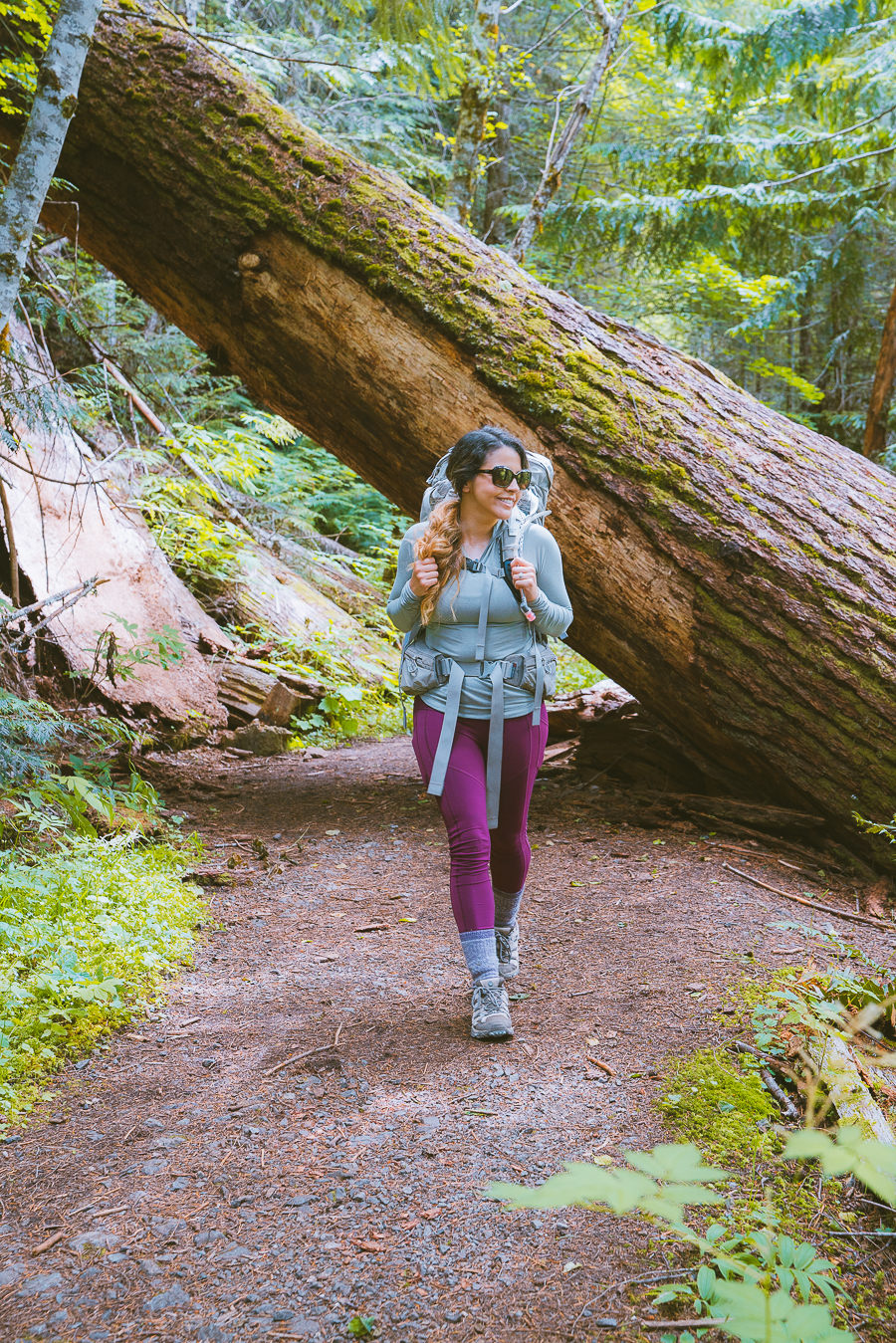
If you want to enjoy your trip, I highly recommend to sit and think about the mileage and elevation gain. What is the max mileage you can do on a day hike? What is the maximum elevation gain you can do on a day hike? Write it down and try to plan your backpacking trip around that max mileage and elevation gain.
Backpacking is a lot more complicated than day hiking. Your equipment is more massive and heavy, and you are hiking for days! Your body can quickly get exhausted on the first day if you hike more than your max mileage/elevation gain. Try to plan each day with less than the max amount of mileage you can hike.
I have made mistakes before. I have planned backpacking trips where the mileage was more then I could day hike. Let’s just say that we were miserable.
Navigation Skills
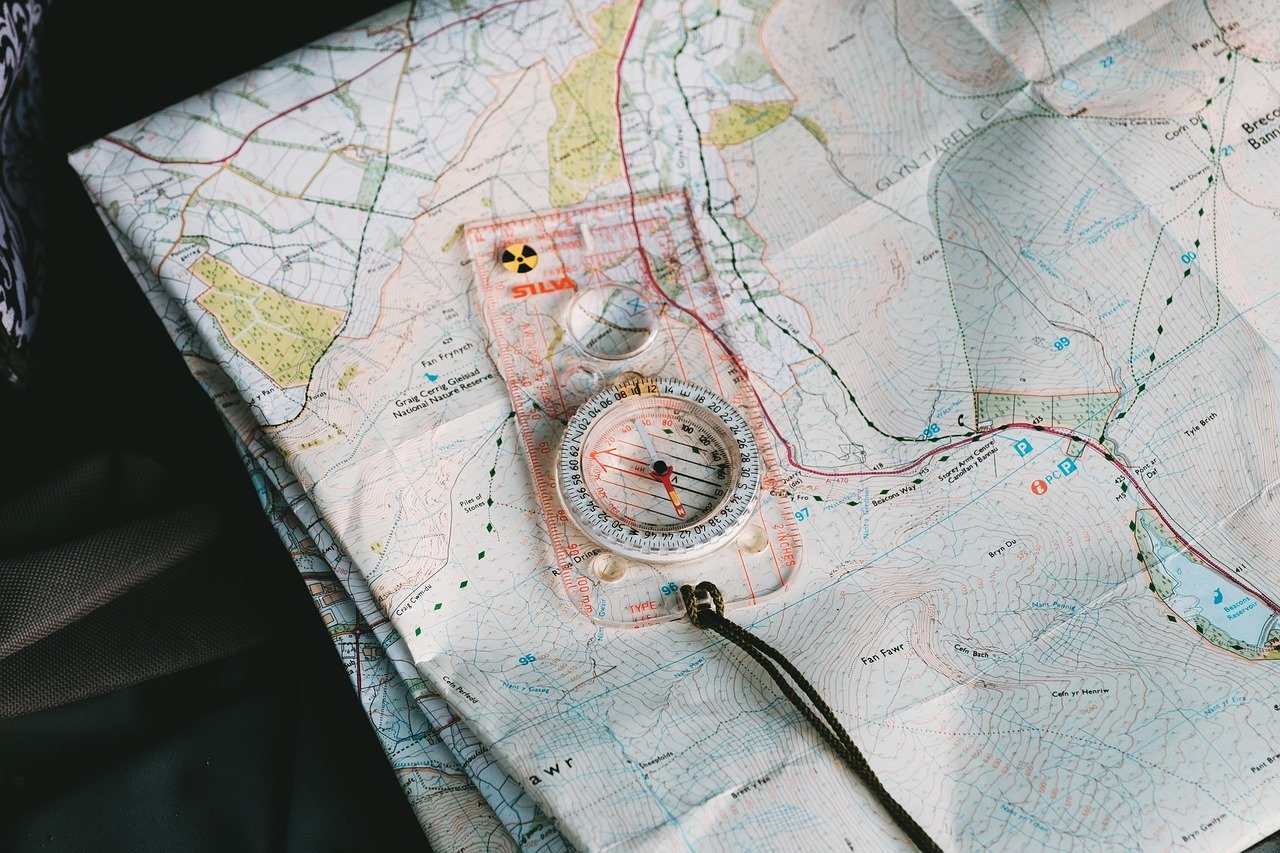
Make sure to understand basic navigation skills in case you get lost. Always carry a physical map and compass and know how to use them. REI offers some navigation skills courses, and you can also learn about basic navigation here.
I also have the All Trails App Pro on my phone to see where I am at on the trails. Do not download the App on the trail, as most trails have no signal. Download it and learn to use it before your trip.
Phones are not as reliable as a real map and compass since they can die, but that is why I always carry an external charger.
Read More: 16 Best Hiking Apps You Need To Download
Protect Against Animals Eating Your Food
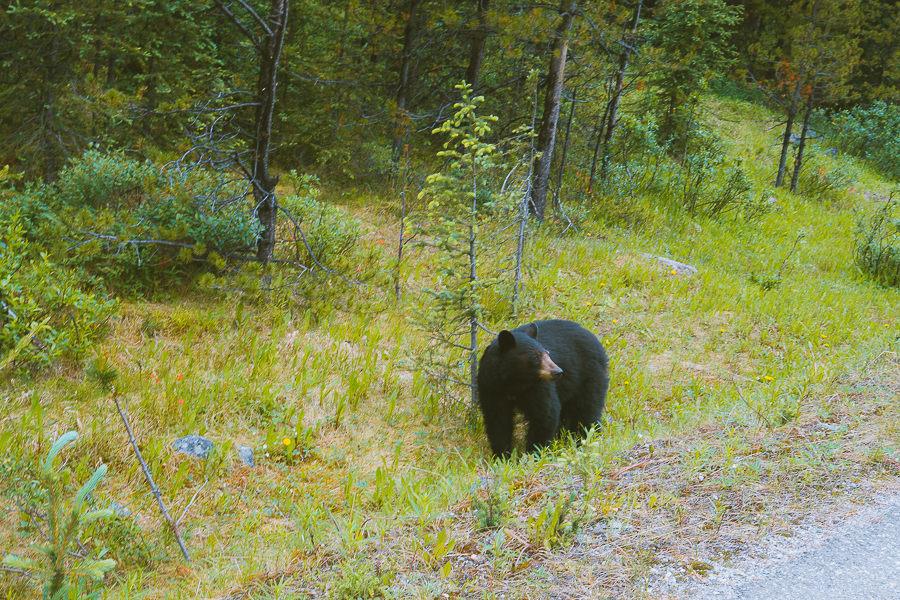
On popular trails, I see many people feeding the wildlife. Wild animals are not made to eat our food. Animals also start to depend on people and guess what happens when winter comes and you are no longer there? They usually die of starvation.
If bears associate food with people, they need to be relocated and are sometimes killed off. Please don’t let bears associate you with food. Properly store your food. Does it suck carrying a bulky bear canister? Yes, it does. But it helps protect the bear and you.
A lot of people complain and say their canister does not fit inside their backpack. Well, I have a solution for you, my friend. There are bear canister holders that you can clip outside of your backpack. This thing is fantastic! So no more excuses. Of course, if you have no bears in your area, you don’t need any of this. This is for bear country only. >>>Save A Bear and Buy A Canister >>>Also, Buy This Awesome Bear Canister Holder Here
Read More: Wildlife Safety Tips For Hikers And Backpackers
Don’t Wear Smelly Products
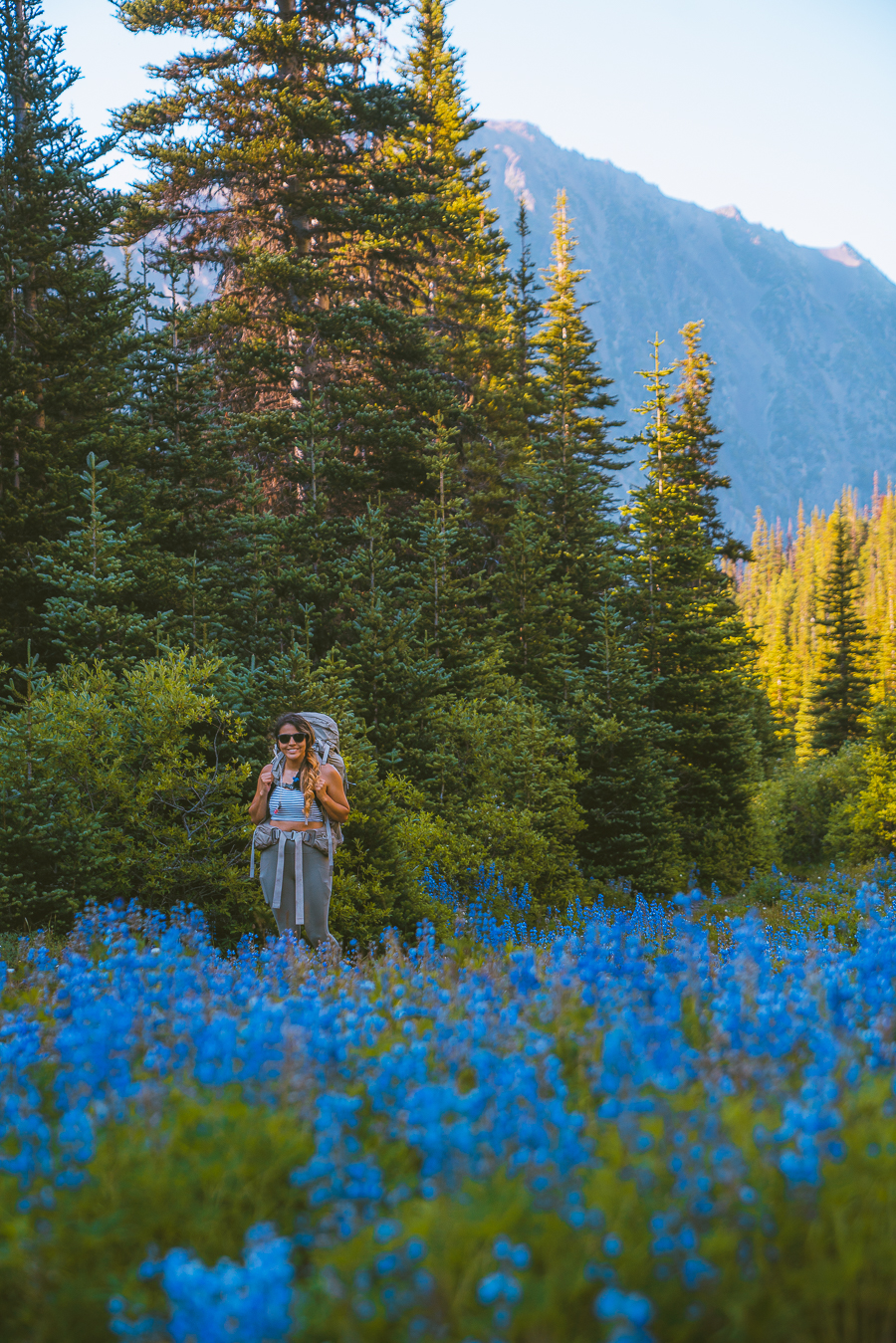
I know it is awesome to smell nice all the time. I love smelling like a fresh bouquet of flowers. But you know what else loves the smell of flowers? Bugs! Yes, tiny little bugs will bite you and attack you if you wear scented products. It has happened to me, and I was in pain for about two weeks.
So do not use scented wipes, lotions, or sprays. The scented floral wipes attracted us to the fleas, so now we purchase the unscented kind.
I recommend getting wilderness wipes just so you don’t feel grimy and gross after not showering for a while. >>>Buy The Wipes Here
Learn About Backpacking Hygiene
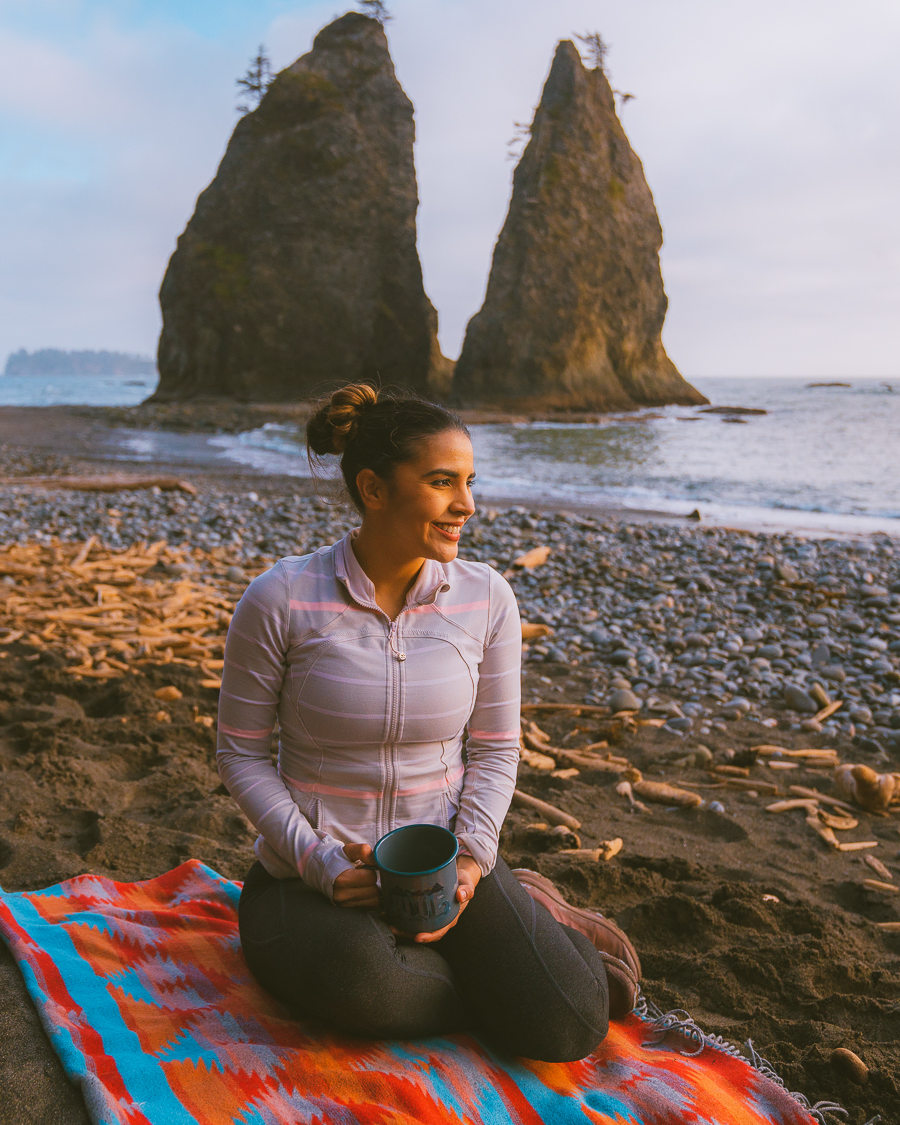
As I said above, wearing scented products is not the best for the outdoors. That does not mean you should forget about hygiene 100%.
As I mentioned, wilderness wipes are a good way to feel cleaner. I like to wipe my whole body with wipes before I go to sleep. There is also a cool new pee rag in the market that many women like to use, and it reduces the use of toilet paper.
I usually bring underwear for every day that I am backpacking, and I also have specific clothing for sleeping. I like to feel clean when I am falling asleep :-).
When it comes to periods, it is important to always bring back your tampons or pads because they do not decompose like toilet paper. A doggy bag is a good way to carry them back. I also started to use the cups for periods, and they are a good alternative.
Read More: The 16 Best Backpacking and Camping Hygiene Tips For Outdoorsy Women
Test Your Gear
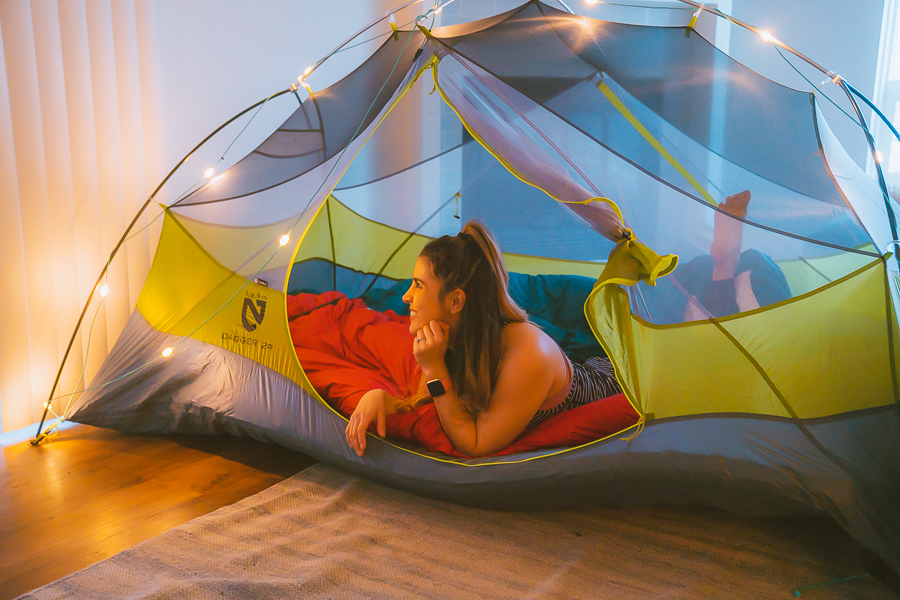
Always test your gear before you head out to the backcountry. That includes tents, headlamps, stoves, a two-way satellite, sleeping pads, etc. There have been times when I bought a tent, and I noticed it was missing a part. Can you imagine getting to your campsite near the end of the day and realizing that?
I usually test stuff in the living room. I make sure my sleeping pad has no holes (I bought one that had a puncture and quickly returned it the next day), or I set up my tent to ensure everything is there. Two-way satellites needs to be set up at home when you have internet.
Check The Weather
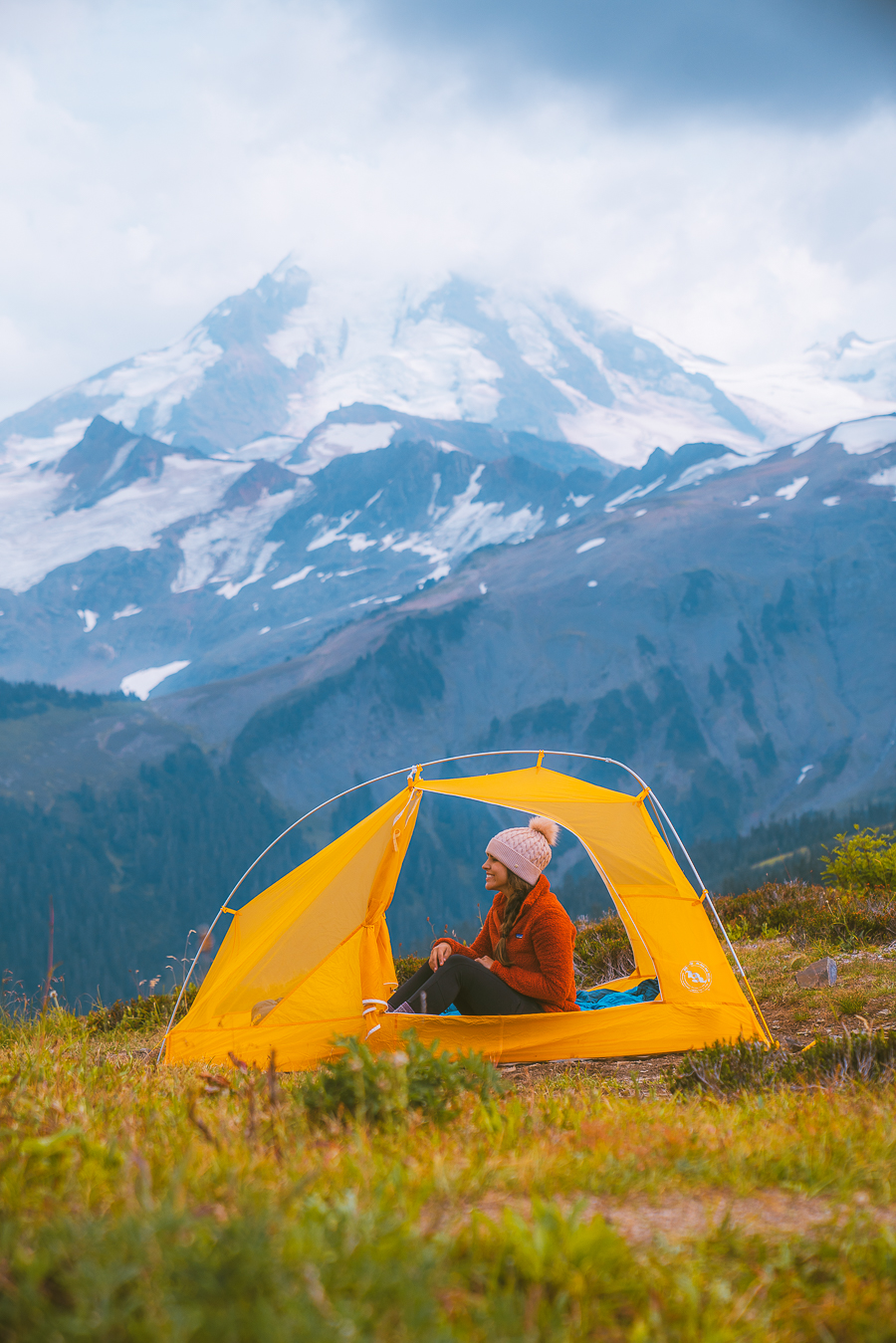
Always check the weather before your trip. Even if the weather says it will be hot and sunny, ALWAYS bring layers, an insulated jacket, and a rain jacket. Weather can change drastically, especially if you are hiking in the mountains.
Let me give you an example of when we day hiked in Mount Rainier. No matter what hike I do, I always bring extra clothes and the ten essentials. This particular day was supposed to be hot and sunny. It was too hot to the point where I stripped off my layers and only wore my sports bra and pants. When we got to the top, the weather took a turn for the worse. It got COLD and foggy! People were scrambling to get down the mountain quickly. I was ok since I had all my layers in my backpack. I was super comfortable.
Now I know this is a day hike example and not a backpacking example, but trust me, if this can happen during a day hike, this can certainly occur on a backpacking trip where you are far away from society. Pack layers. I like to use this website to check the weather.
Read More: How To Backpack Or Hike In The Rain
Plan Your Trip
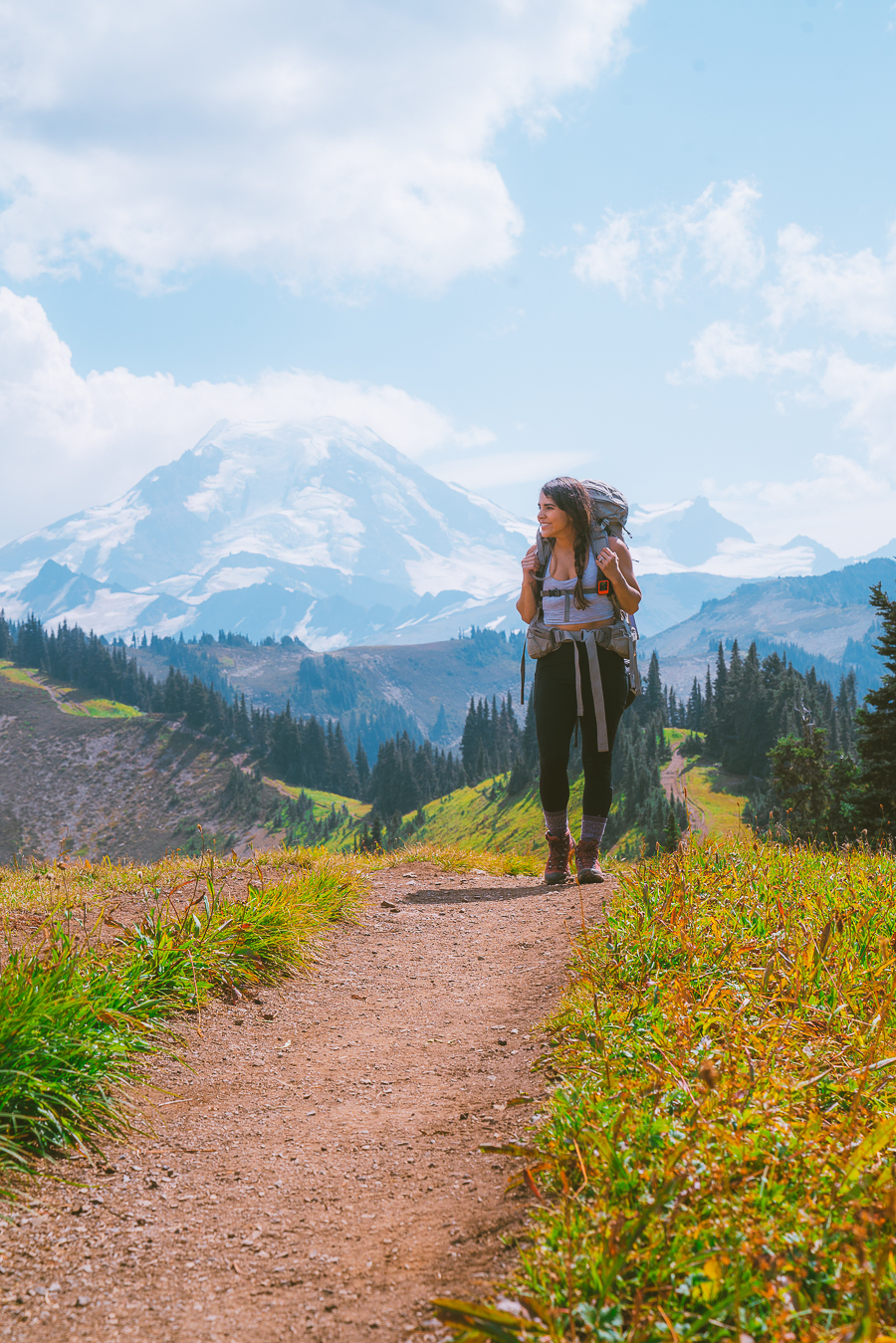
Always plan your backpacking trips. Always. Backpacking is not the time to just “wing it”. The times to “wing it” are when you are day hiking (but still bring the ten essentials), or exploring a brand new city. First of all, many backpacking trips may need a permit, which can be challenging to obtain depending on where you want to go (Havasu Falls for example).
Second, you have to make sure you pack the correct amount of equipment, food, and clothing. Don’t forget about maps and compasses! Backpacking trips can be challenging to plan, but in my opinion, the reward is usually worth it!
To plan your backpacking trip, I recommend starting at the park’s official website and looking at their map. Next, think about the max mileage and elevation gain you can do in a day hike. Pick campsites with a good amount of mileage and elevation gain. You can also look around Pinterest or Google to see if a blogger wrote about backpacking in that area. It needs to be a blogger, as bloggers tend to be more descriptive and have more pictures. Next, you book your permit and start thinking about what to pack.
Read More: How To Plan A Backpacking Trip
Have A Plan On Water
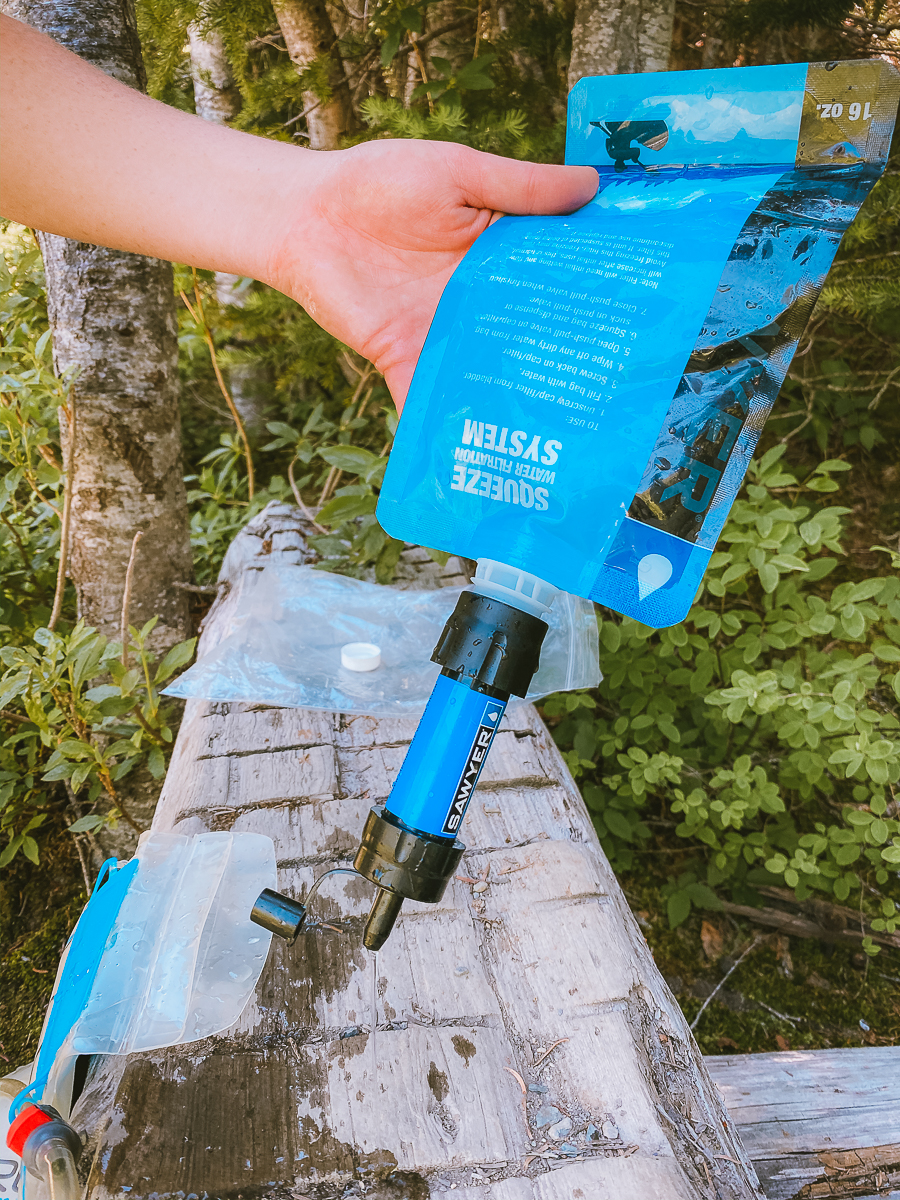
This is one of the most important lessons I learned on a backpacking trip through Utah. You always need to bring enough water!
When we went to Canyonlands National Park, we saw rivers on the map that looked like water sources. We still packed a great deal of water, just in case. But what we didn’t do correctly was portion our water. We drank most of the water on the first two days. Our food also needed water to eat. So we had to skimp on some dinners to make sure we could make it out of the trail alive.
If you are going to be in a desert area, pack a ton of water even if you see water on the map. Pack foods that do not need water, and portion your water for each day.
If you are in an area that has a ton of water, like the Pacific Northwest, pack a water filter. There are also tablets that don’t taste the best but can help save your life in case the water filter doesn’t work. >>>Check Out This Filter Here >>>Check Out These Tablets Here
Read More: The 10 Best Backpacking Water Filters
Take Care Of Your Feet
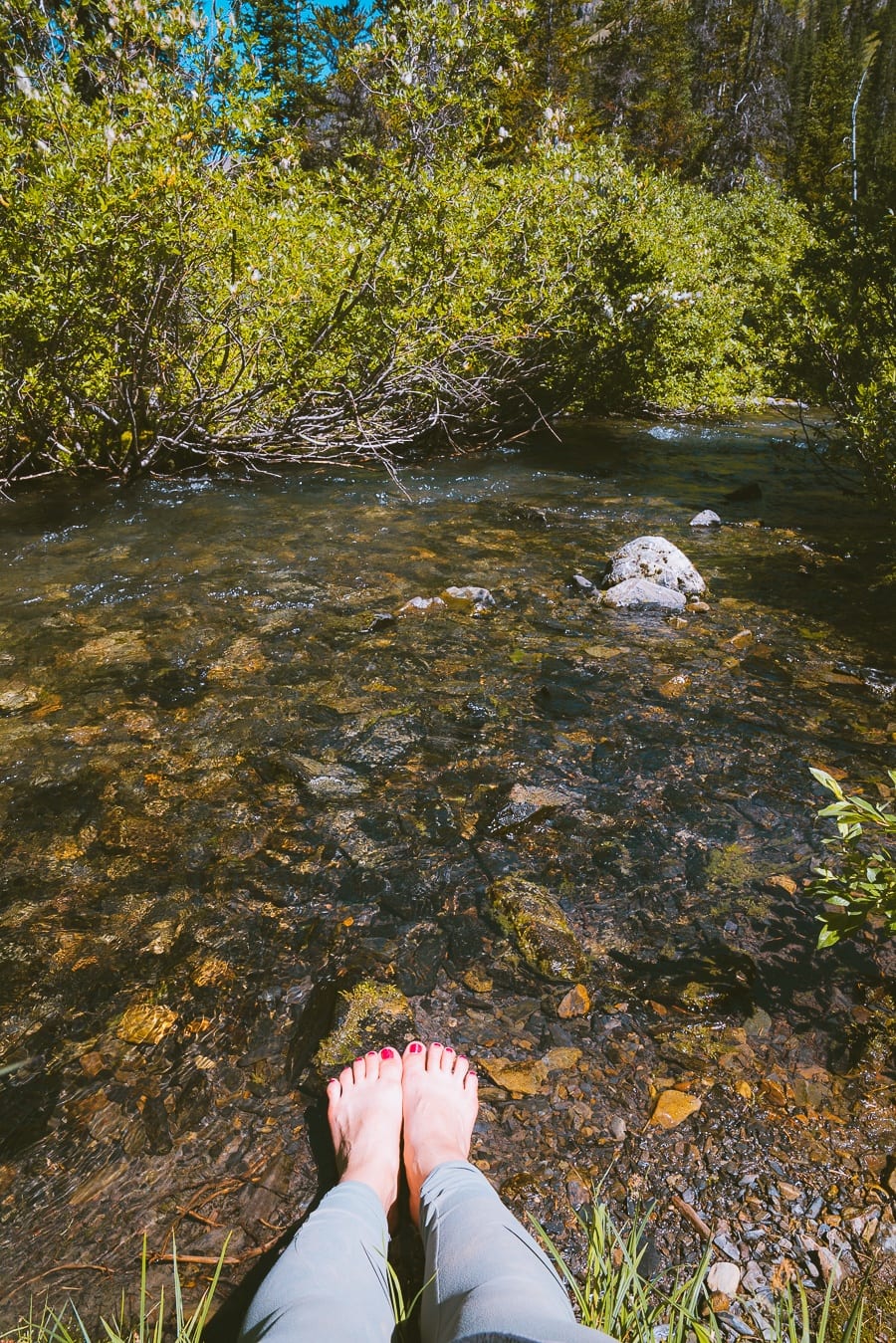
Blister prevention is key to having a comfortable backpacking trip. I always bring extra socks when backpacking and wear a new pair of socks every day. I also wear breathable wool hiking socks to prevent damp, wet, sweaty socks when hiking. Also, you should try to break in your boots/shoes before the trek.
I also think taking breaks helps prevent blisters. I know some speed hikers who tend to get more blisters than me completing the same trail. The main difference is that I took more breaks. Nonstop backpacking means that your feet are always sweaty, which leads to very damp wet socks. Just be wary of your feet and if you feel blisters forming, take more breaks or try to let your feet dry out every few miles.
When I get to the campsite, I take off my shoes and make sure they get nice and dry. I also bring an emergency kit to tend to any blisters.
Read More: How To Prevent And Treat Blisters When Hiking
Buy The Correct Backpack
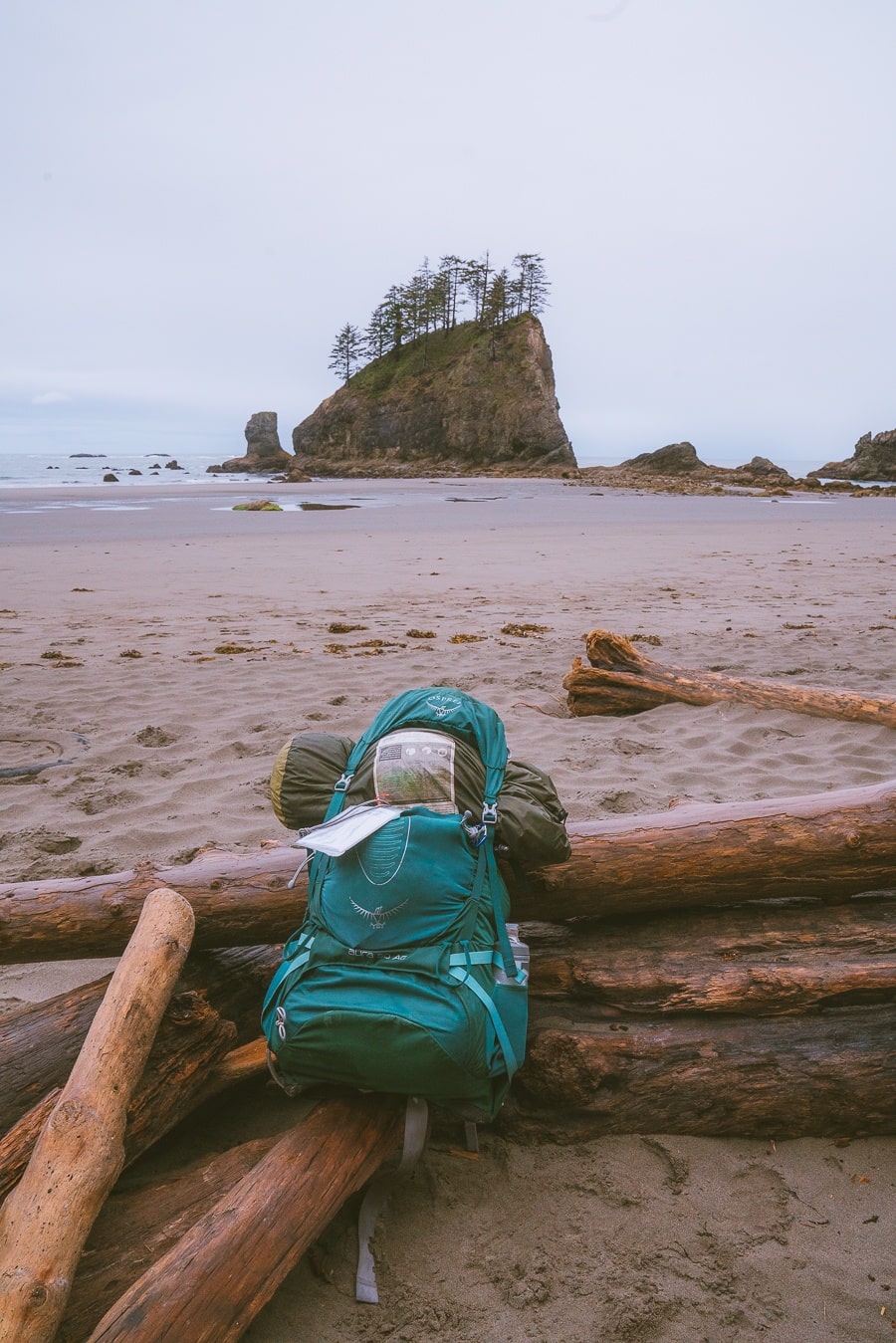
Not all backpacks are made the same. There are some pretty terrible backpacks out there. Do not make a mistake by buying just any pack you see. It can ruin your trip. On my first backpacking trip, I bought a cheap backpack. It was horrible. It had no support, so I had to carry all my heavy stuff on my back. That is painful for a newbie!
If you are wondering, aren’t all the equipment being carried by your back? Not necessarily… If you buy a good quality backpack that has fantastic support, the weight should be on your hips, not your back. This prevents backaches and pain. When I realized this, I donated the pack and bought an Osprey, which is known to have the best backpacks out there with outstanding support. I love my new backpack! >>>Check Out My Fav Backpack Here
Read More: 10 Best Backpacking Backpacks For Women
Learn About Campfire Safety
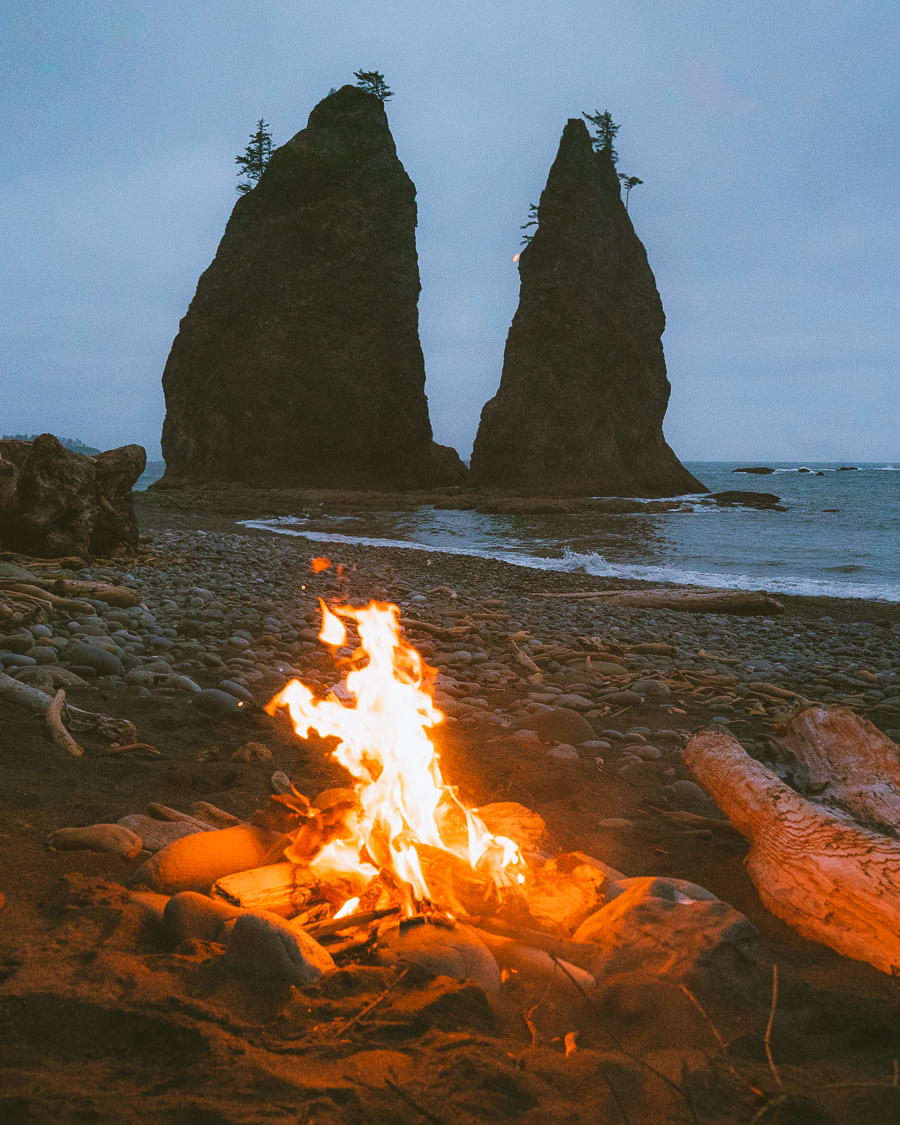
I know it can be tempting to cook inside your tent when cold. I have been through a few winter storms myself inside my tent. But cooking inside is not safe. Your tent can easily catch on fire, and the carbon monoxide fumes can kill you. So even if it is cold, dark, and lonely, cook outside.
A trick I have learned is to bring foods that do not need water just in case it is raining outside. All you would need to do is open that granola bar and eat.
If you build a fire, always make sure it is put out. Triple-check it if you can. Also, read about the local rules about making a fire. There are times when there are fire bans because it is too dry in the area, or sometimes the parks do not allow fires over a certain elevation. You can read more on fire safety here.
Join my Newsletter to receive my free Backpacking Checklist!
Subscribe to have posts delivered straight to your inbox!! PLUS, get my FREE backpacking checklist!
Bring The Correct Amount Of Food
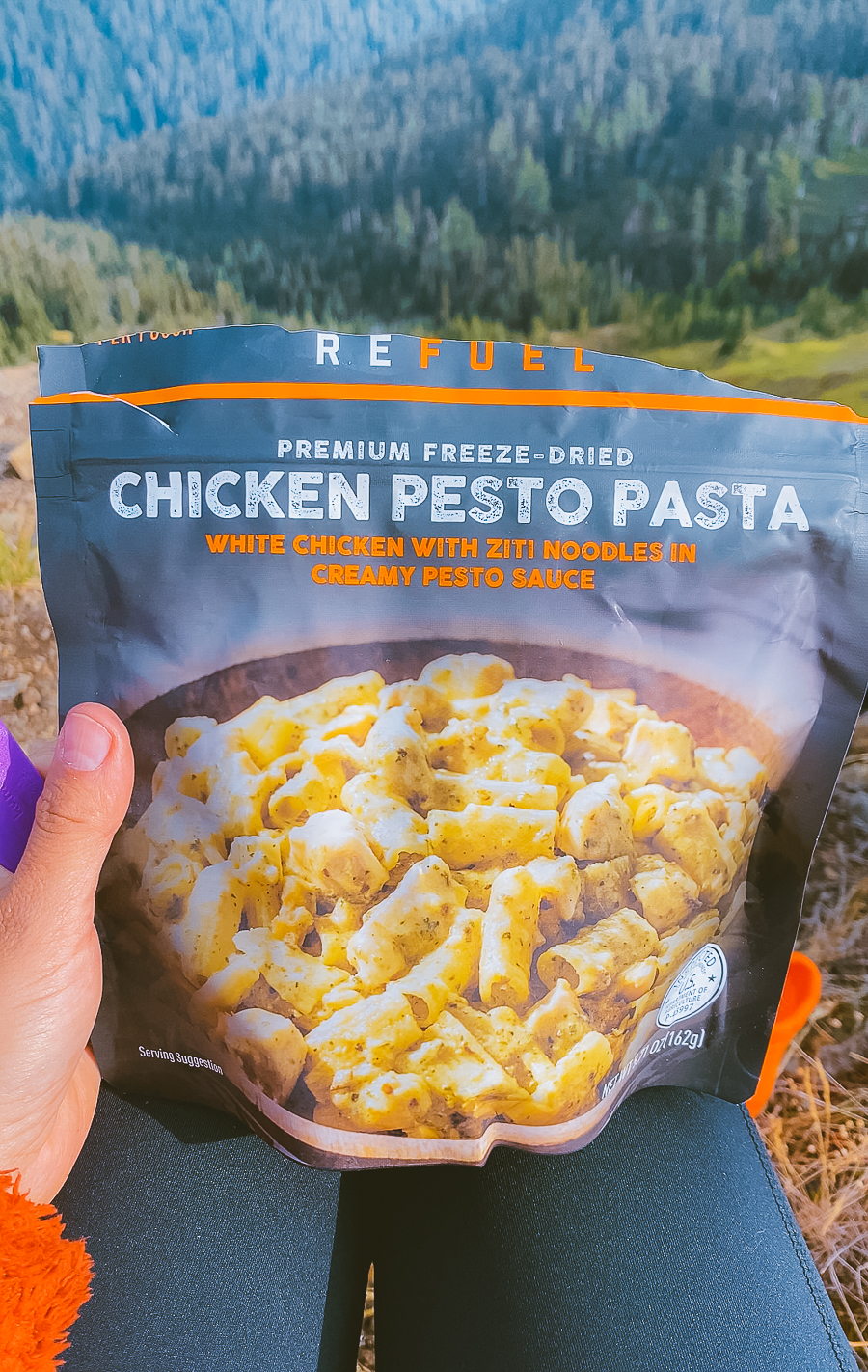
Bringing the correct type of food while backpacking is essential to get you through the day. You need a lot of energy to backpack. Packing things with high carbs and fats will get you through the trails. If you are on a diet, no worries, as you will be burning a ton of calories (around 2,00-3,000)! So you need solid food to get you through each day.
I usually bring dry backpacking food and salmon/tuna. I also bring jerky, bars, trail mix, dried fruits, and nuts. This dry backpacking food is my favorite!
Try to eat quality calories. Food items containing cheap sugars will give you quick-burning fuel that will make you burn energy too fast too quickly. Try to bring good quality food that will make you go for hours.
Get Comfortable
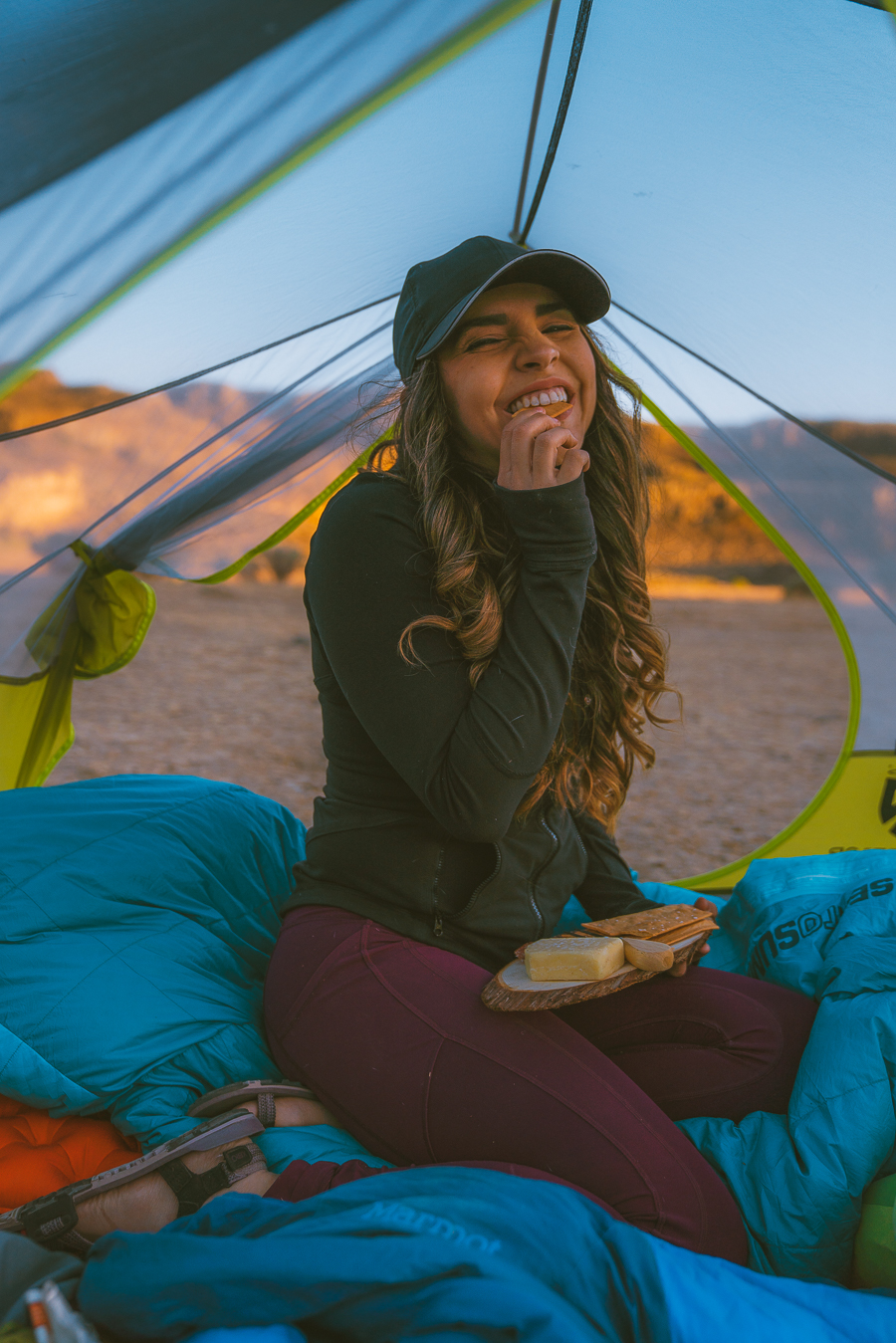
I know I said not to overpack above, but that is mainly a rule for first-time backpackers. You can splurge on weight once you have a few backpacking nights under your belt.
I like to bring sandals because I like taking off my big bulky boots and putting on some comfy shoes. I also, on occasion, like to bring cheese plates or even comfy chairs.
I don’t always bring these items on difficult long backpacking trips, but I do occasionally when I feel like the trail is easy enough.
Backpacking is hard, but it can also be fun and comfortable. This is your trip, so make it as comfortable as you would like!
Tell Others Your Plan
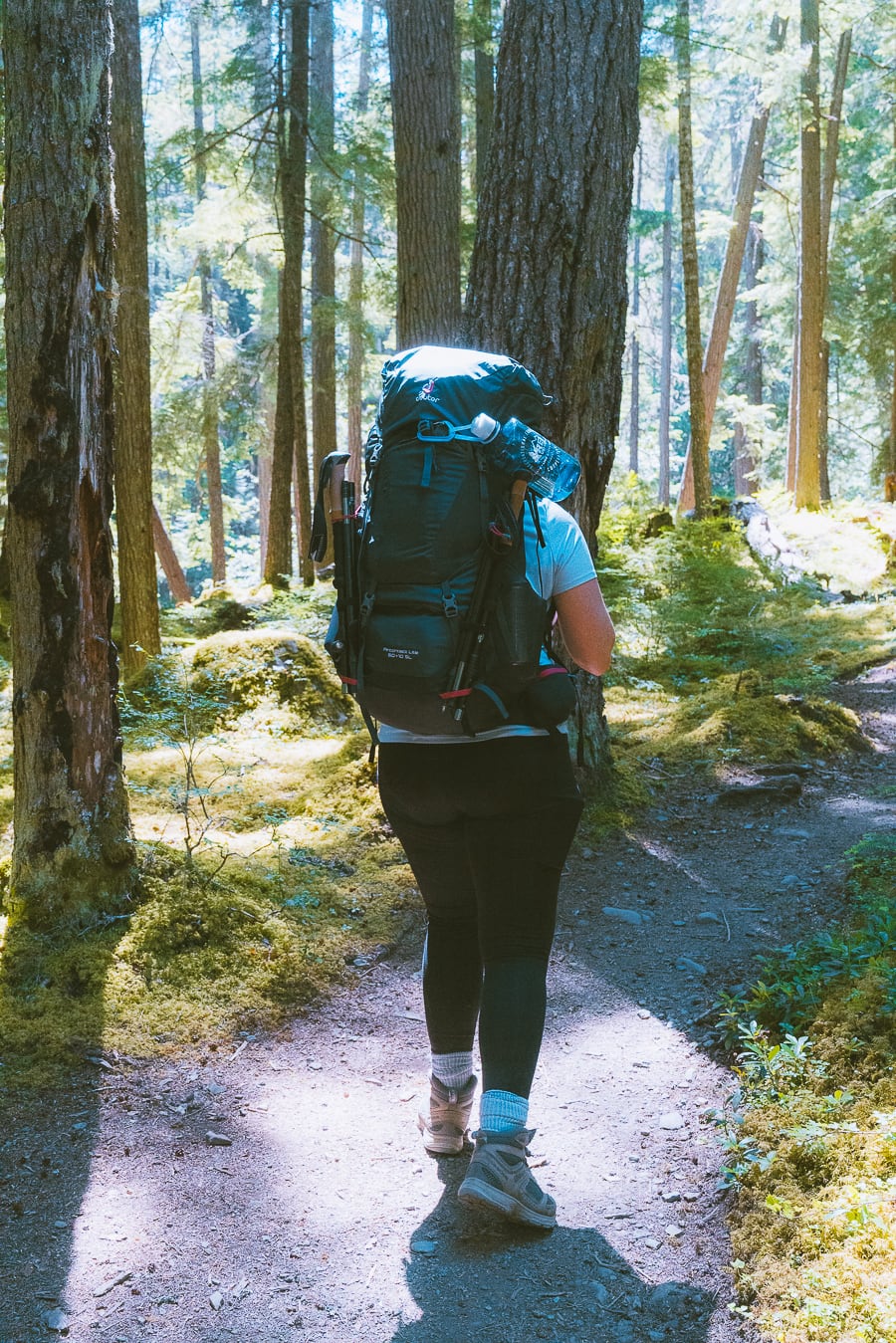
Always leave your overnight backpacking details with someone in case of an emergency. If something terrible happened to you and you told no one about your trip, then it might take a while for people to realize you are missing. Here are some tips on what to give your trusted loved ones:
- Let them know where you will be and the description of the trail,
- Names of each campsite and which days you will be at each campsite (If they have names),
- Tell them the description of your car and license plate,
- Let them know how long it will take you. Add some time in for you to take pictures or hike slowly. Make sure to account for slow hiking when you are fatigued.
What To Bring Backpacking
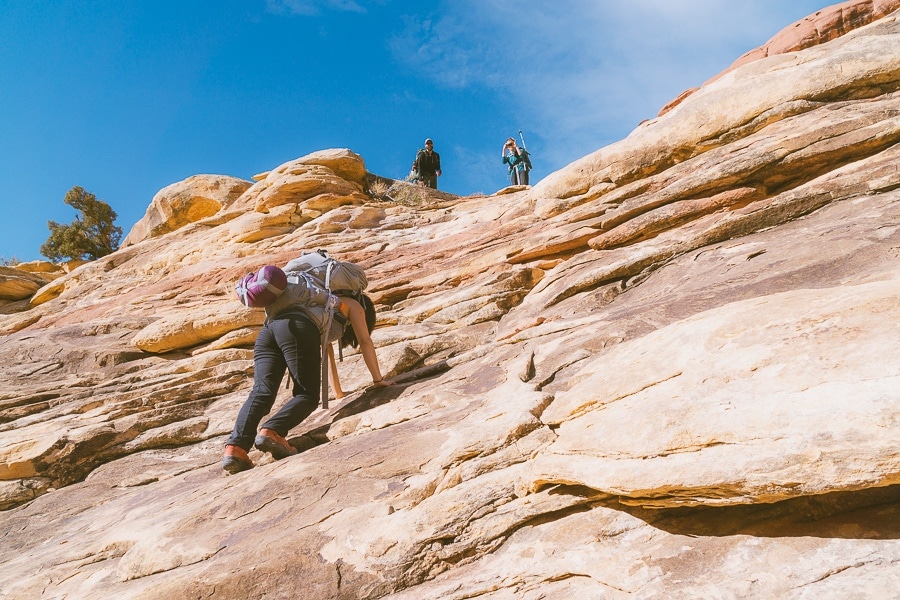
Packing the correct gear can help save your life if you ever run into trouble. I always pack the ten essentials and other equipment that is needed in my backpack. Here is the list:
Backpacking Gear
- Backpacking Pack
- Backpack Rain Cover
- Sleeping Bag
- Sleeping Pad
- Tent Or Hammock
- Compression Sack
- Pillow
- Sleeping Back Liner
- Day Pack
Hiking Extras
- Headlamp or Flashlight
- Camera
- Binoculars
- Knife
- Hammock
- Sunglasses
- Chargers
- Extra Batteries
- Solar Panel
- Trekking Poles
- Permits
- Camp Chair
- Games
Emergency Items
- First Aid Kit
- Lighter/Matches
- Whistle
- Emergency Blanket
- Bear Deterrent
Food and Water
- Food
- Water
- Water Reservoir/Bottle
- Water Filter
- Water Chemical Treatment
- Camping Stove
- Cutlery
- Snacks
- Stove Fuel
- Cookware
- Plates, Bowls, Cups
- Matches
- Bear Cannister
- Coffee Press
- Soap and Sponge
Clothes in The Winter
- Base Layers
- Gloves
- Warm Hat
- Crampons
- Snow Shoes
- Warm Winter Jacket
- Insulated Hiking Boots
Personal Items
- ID
- Phone
- Wallet
- Cash/Credit Card
Navigation
- Map
- Compass
- Route Description
- GPS
- Personal Locator Beacon
- Watch
Hygiene
- Bathing Wipes
- Toilet Paper
- Insect Repellent
- Hand Sanitizer
- Waste Bag
- Trowel
- Menstruation Products
- Medication
- Sunscreen
- Toothbrush/Toothpaste
- Blister Treatment
- Chapstick
Clothes
- Sweat Wicking Shirt
- Pants, Shorts or Leggings
- Lightweight Fleece
- Jacket
- Hiking Boots or Shoes
- Many Pairs of Wool Socks
- Sun Hats
- Sandals or Camp Shoes
- Rain Jacket
- Gaiters
- Sleeping Clothes
- Buff
- Underwear
I wrote an ultimate backpacking gear guide below. It includes a gear list such as a backpacking tent, hiking pants, hiking boots, food storage and much more.
Read More: The Ultimate Backpacking Checklist
What To Wear Backpacking
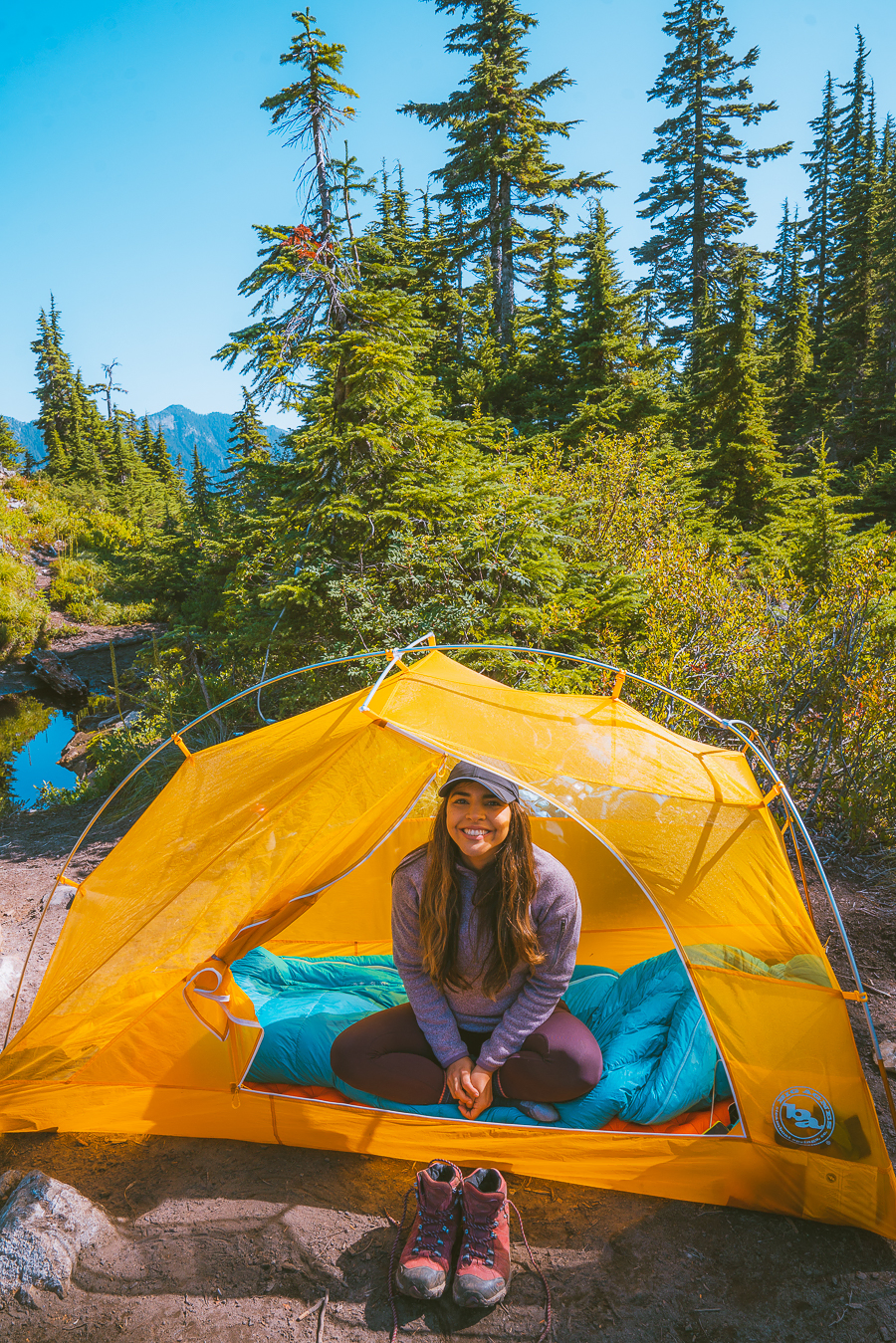
I’ll be honest with you. I like to rewear my clothes when backpacking. It greatly reduces the weight of my pack, and my clothes are usually sweat-wicking and anti-stink. When it comes to underwear though, I don’t rewear that. I usually bring a pair for every day I am backpacking.
If I am backpacking for a long time, I bring more clothing options, but I try to stay as minimal as possible. Below are things I usually pack to wear when backpacking.
- Sweat Wicking Shirt
- Rain Jacket
- Insulated Jacket
- Base Layers
- Sweater
- Sunglasses
- Hiking Pants and/or Leggings
- Hiking Boots
- Sun Hat or Beanie
- Sports Bra and Underwear
- Wool Socks
- Trekking Poles
- Sandals or Camp Shoes
- Sleeping Clothes
Read More: What To Wear Hiking/Backpacking For All Seasons
Backpack With Friends
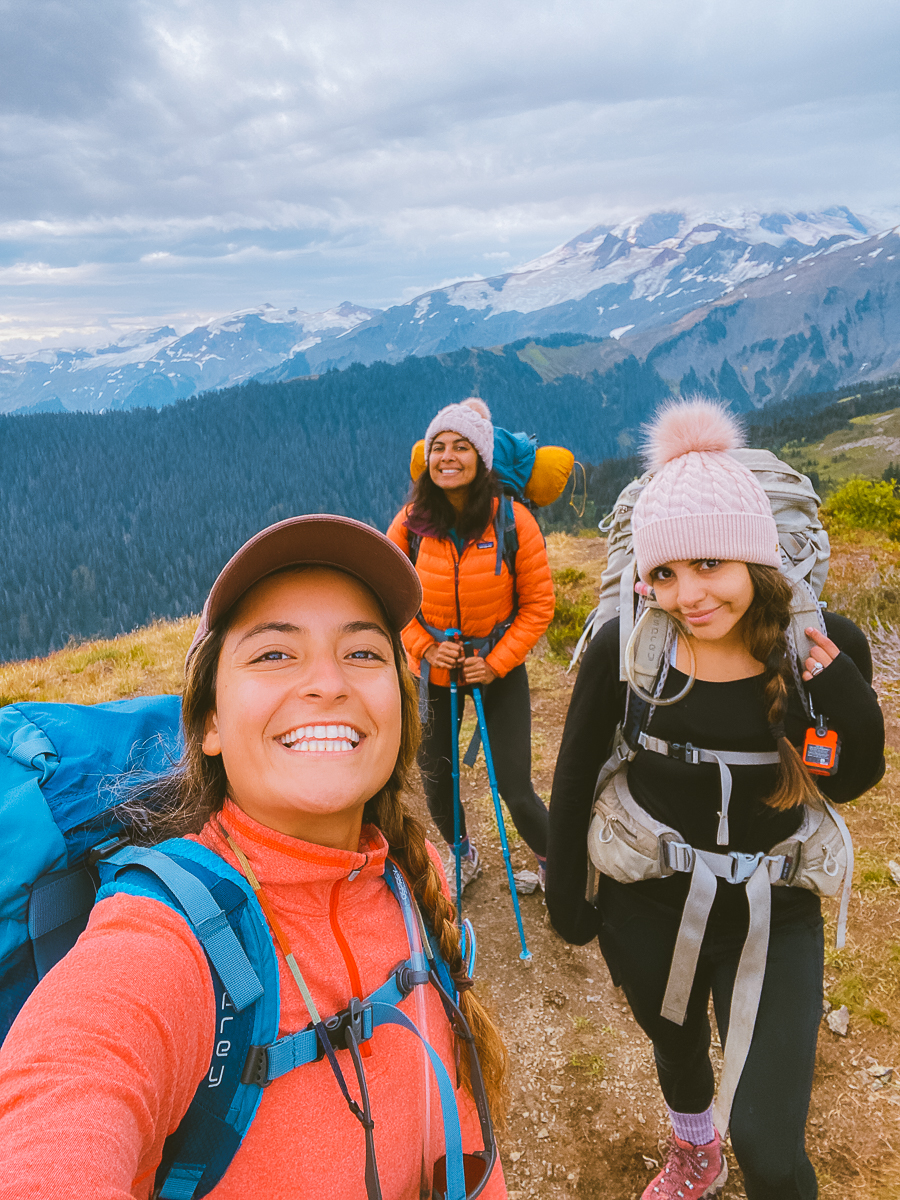
The first time you go backpacking, it is best to go with a friend, husband, or family member. Trust me, it makes the planning so much less stressful. They can help carry things like the tent, for example, and it makes it less scary mentally.
It is even better when your friend has already backpacked in the past. I have taken friends on their first backpacking trip, and every time it has gone pretty smoothly, and they enjoyed it.
I know not everyone has outdoorsy people they can go with, but there are ways to find outdoorsy friends. I have used many online apps to find some of my best outdoorsy friends.
Some of the apps you can use to find friends are:
- Bumble
- Local Hiking Facebook Groups For Women
- Meetup
Leave No Trace Behind
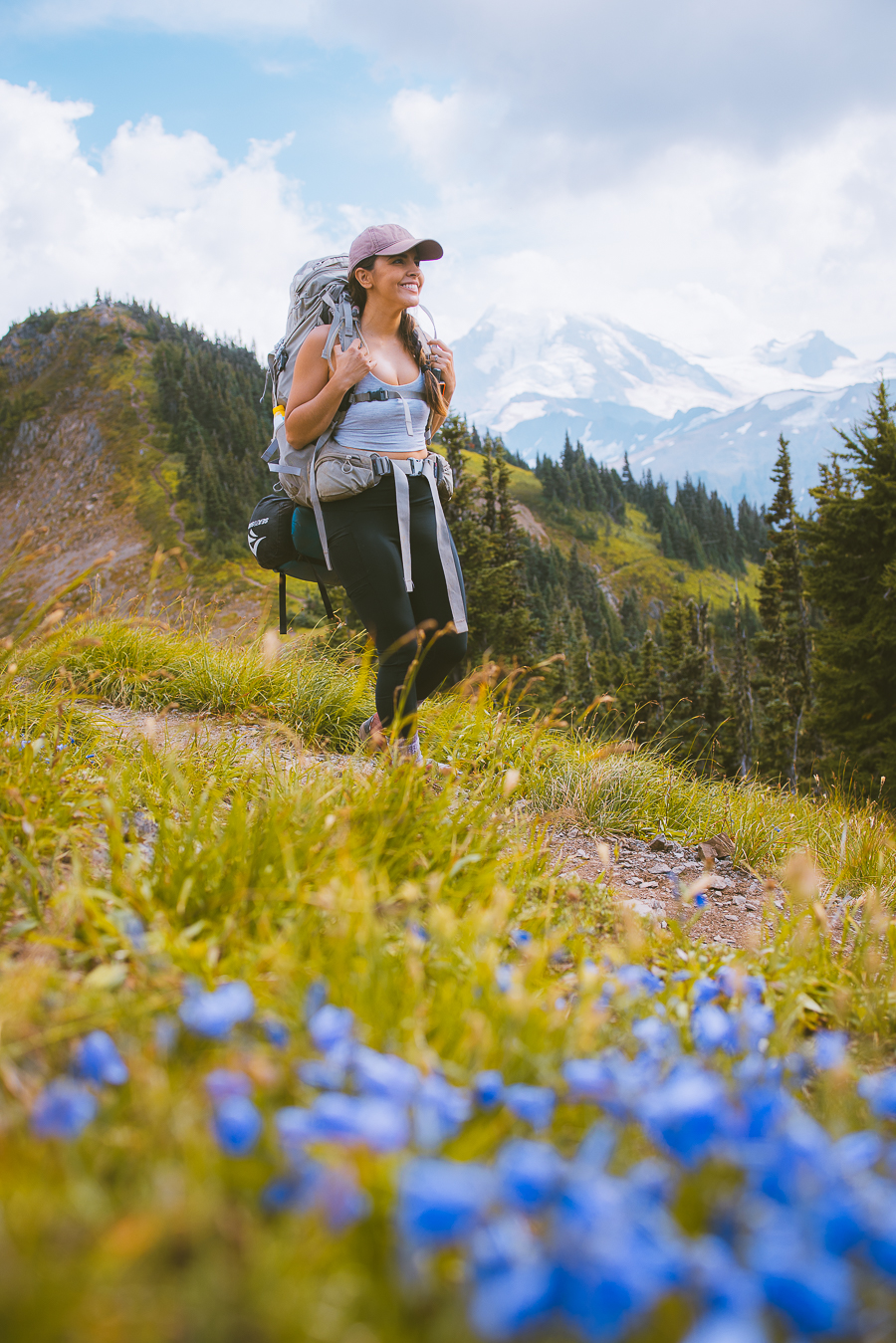
Leave no trace behind is one of the most important backpacking tips, and sadly not everyone follows it or knows about it. The main concept is to leave the wilderness just how you saw it when you arrived. Here are the seven principles:
- Plan Ahead And Prepare,
- Travel And Camp On Durable Surfaces,
- Dispose of Waste Properly,
- Leave What You Find,
- Minimize Campfire Impacts,
- Respect Wildlife,
- Be Considerate Of Other Visitors.
Read More: What Are The 7 Principles Of Leave No Trace?
Final Thoughts On Backpacking Trips For Beginners
Thanks for reading about beginner backpacking. I have a bunch of other posts on outdoor tips and gear reviews if you need some more advice:
- Backpacking Essentials
- Best Backpacking Sleeping Pads
- Hiking For Beginners
- Beginners Guide To Winter Backpacking
- The Best Budget Backpacking Gear

Join my Newsletter to receive my free Backpacking Checklist!
Subscribe to have posts delivered straight to your inbox!! PLUS, get my FREE backpacking checklist!
